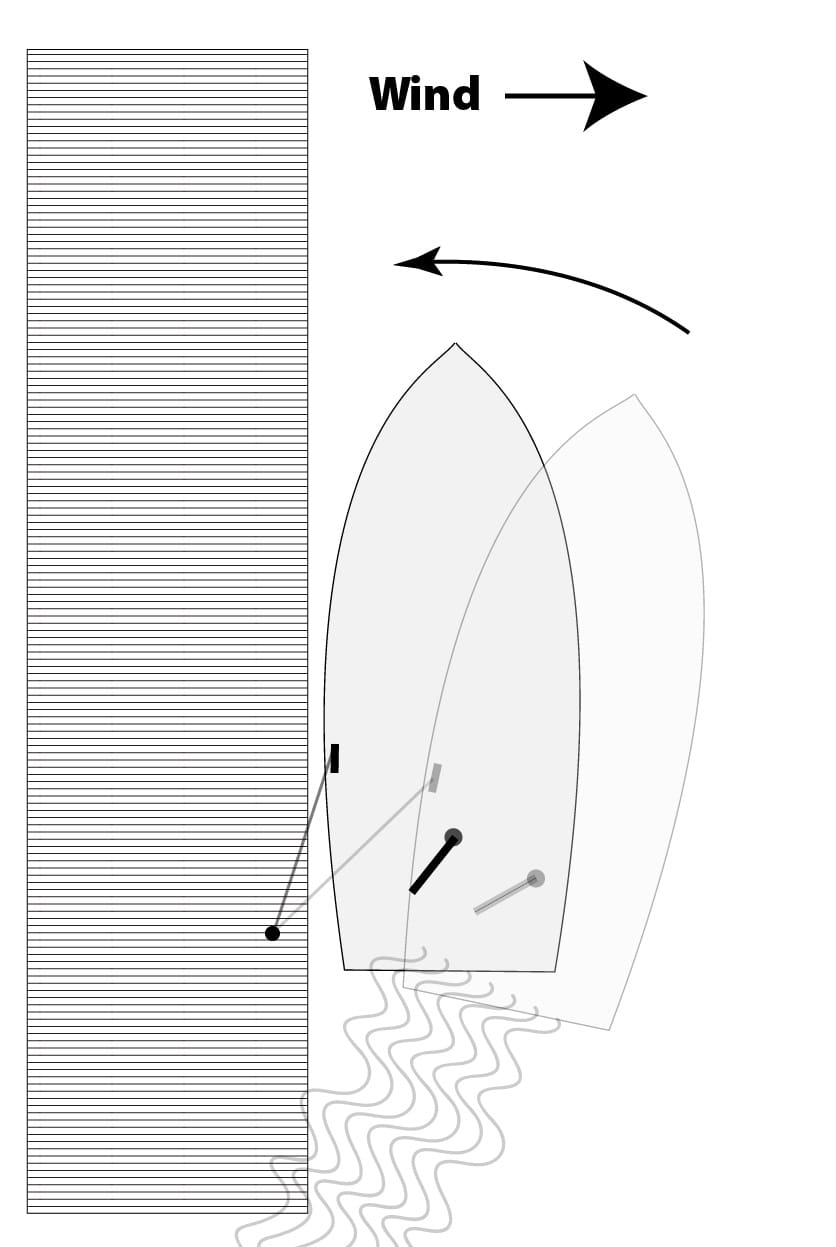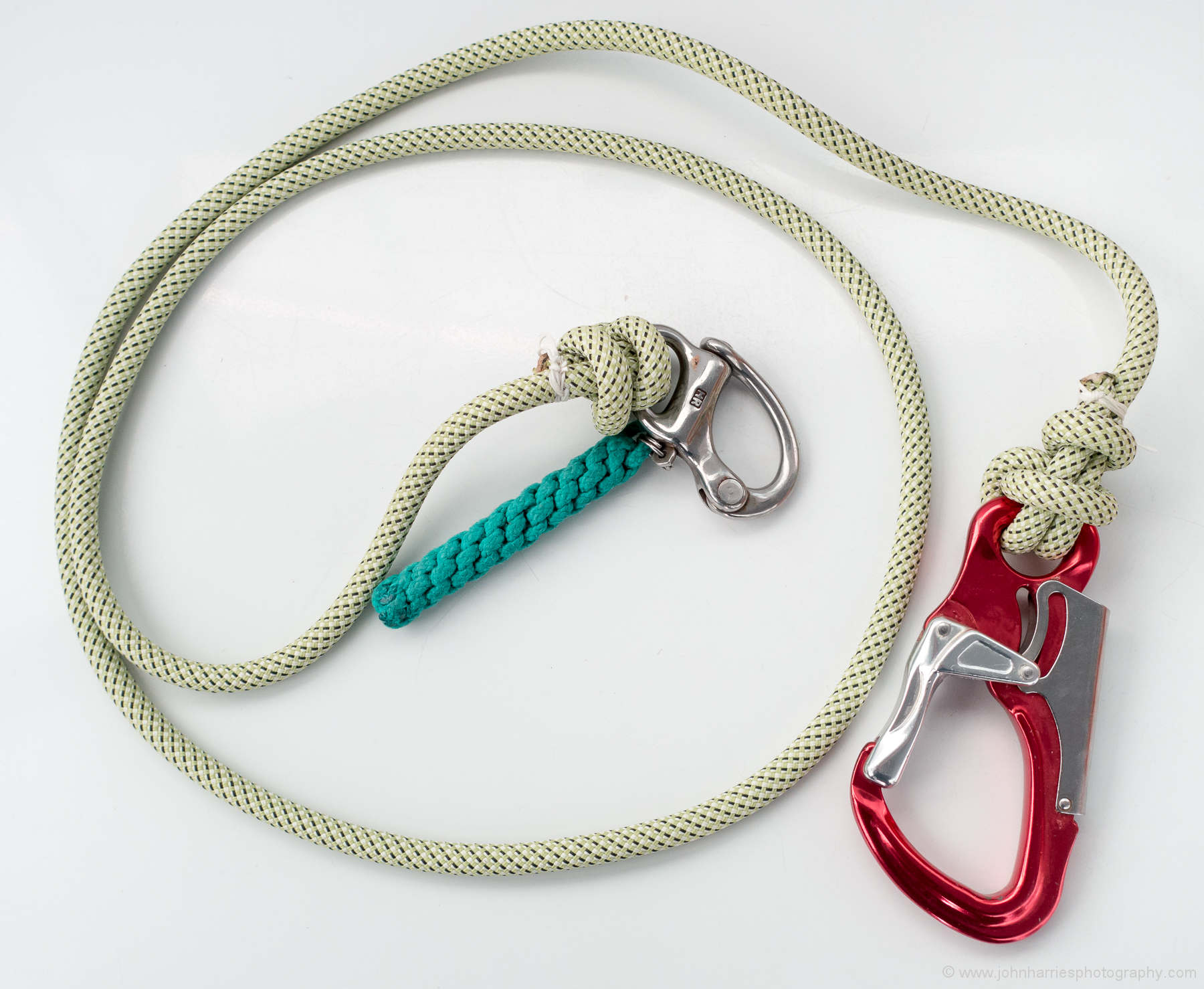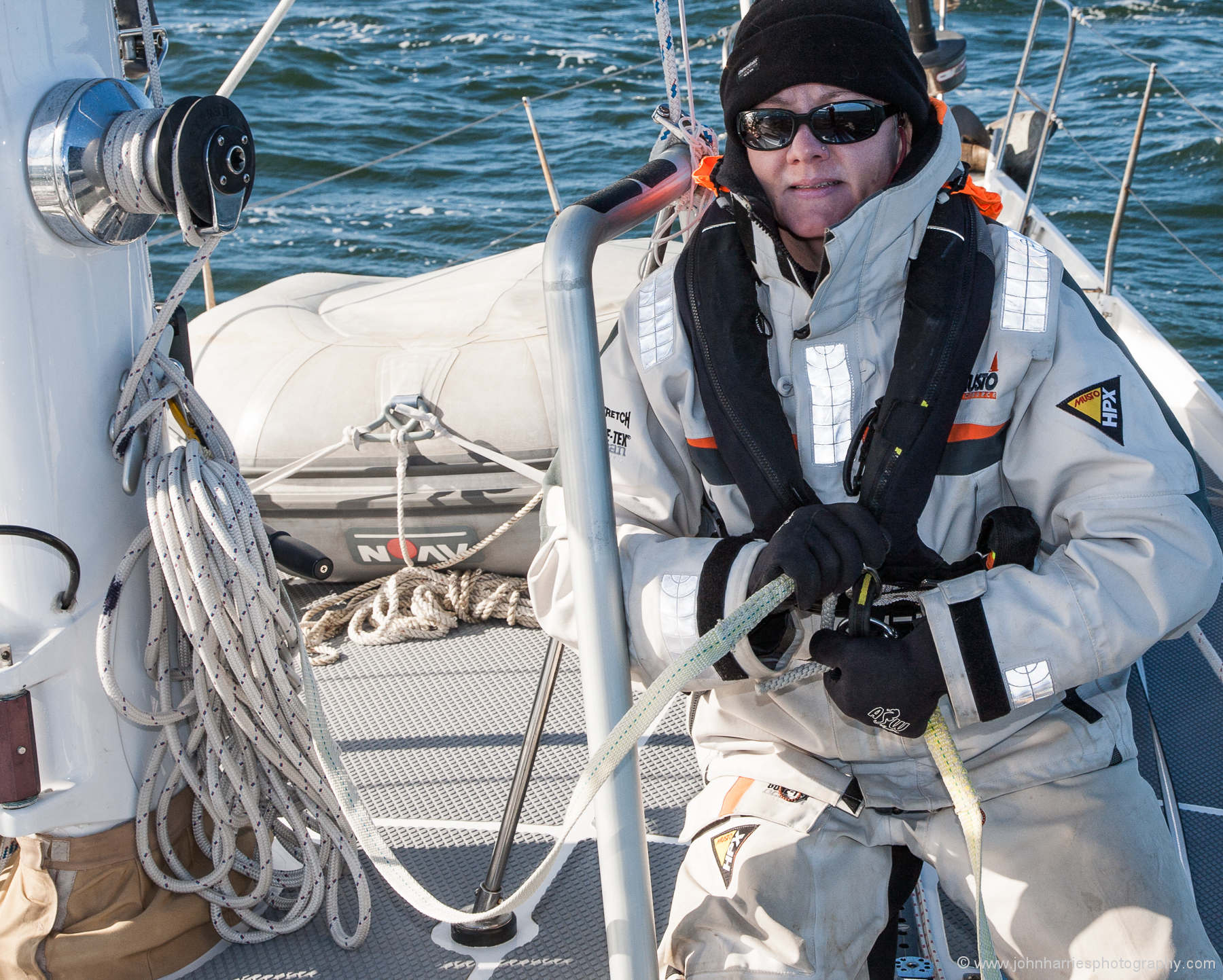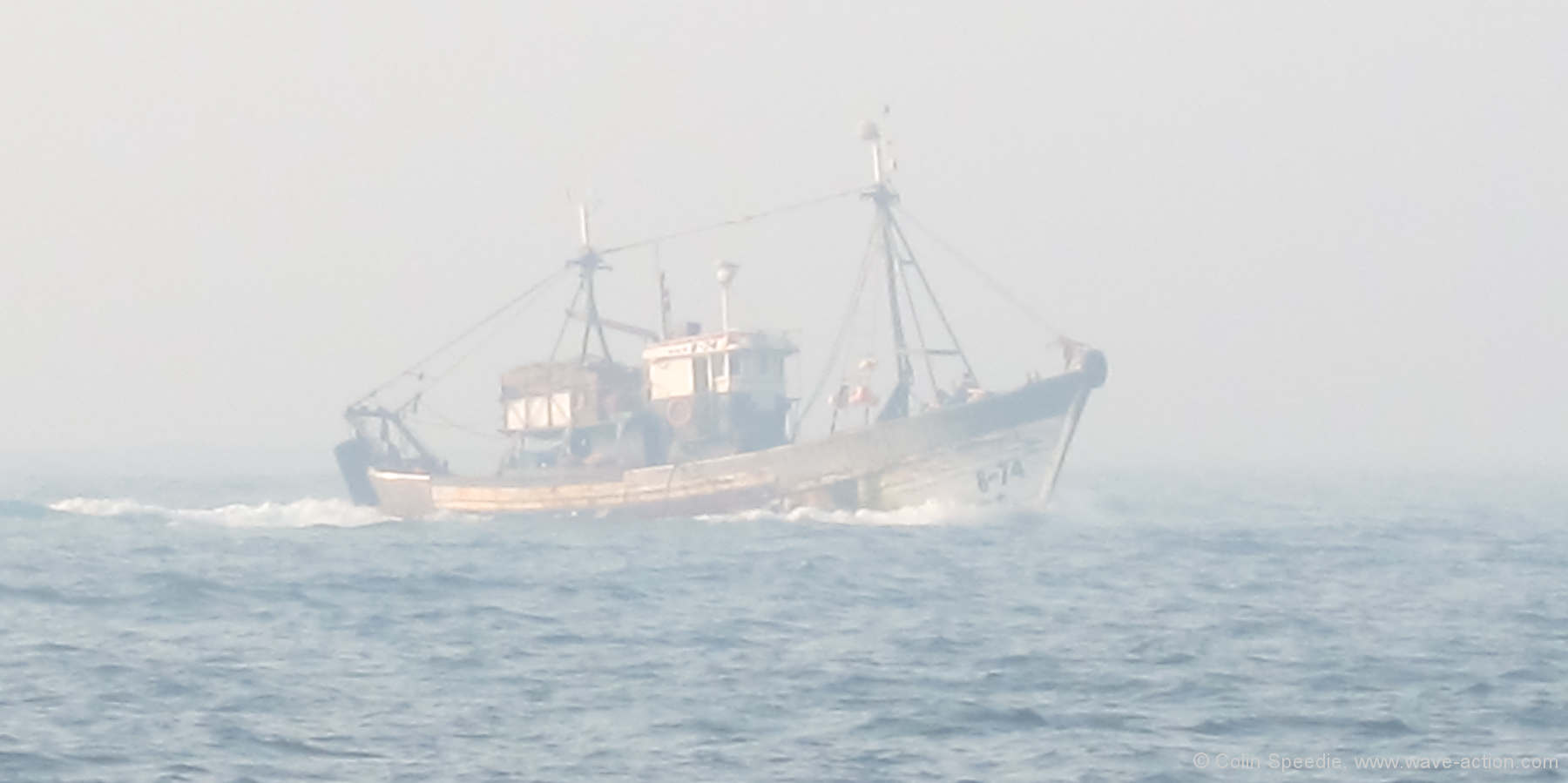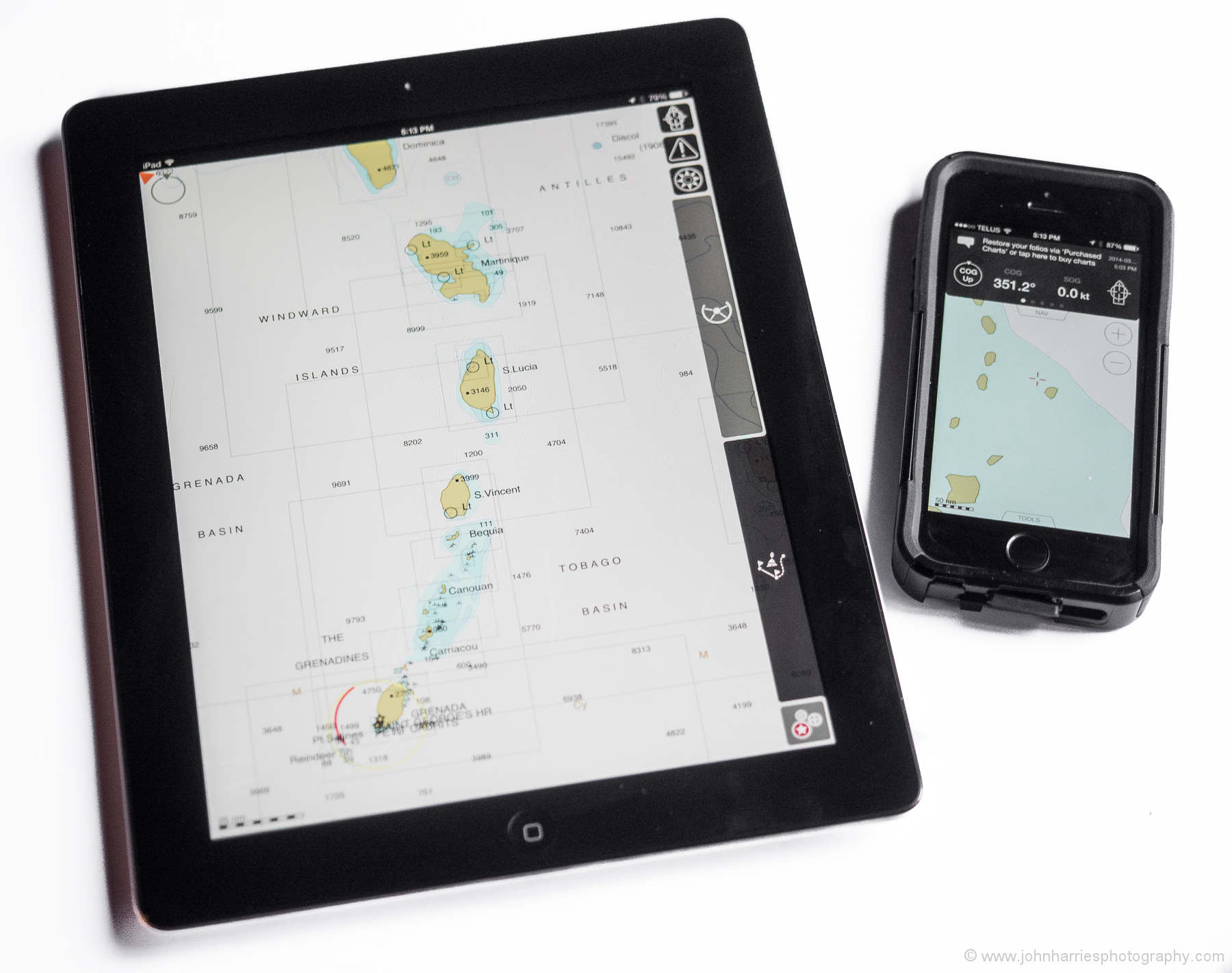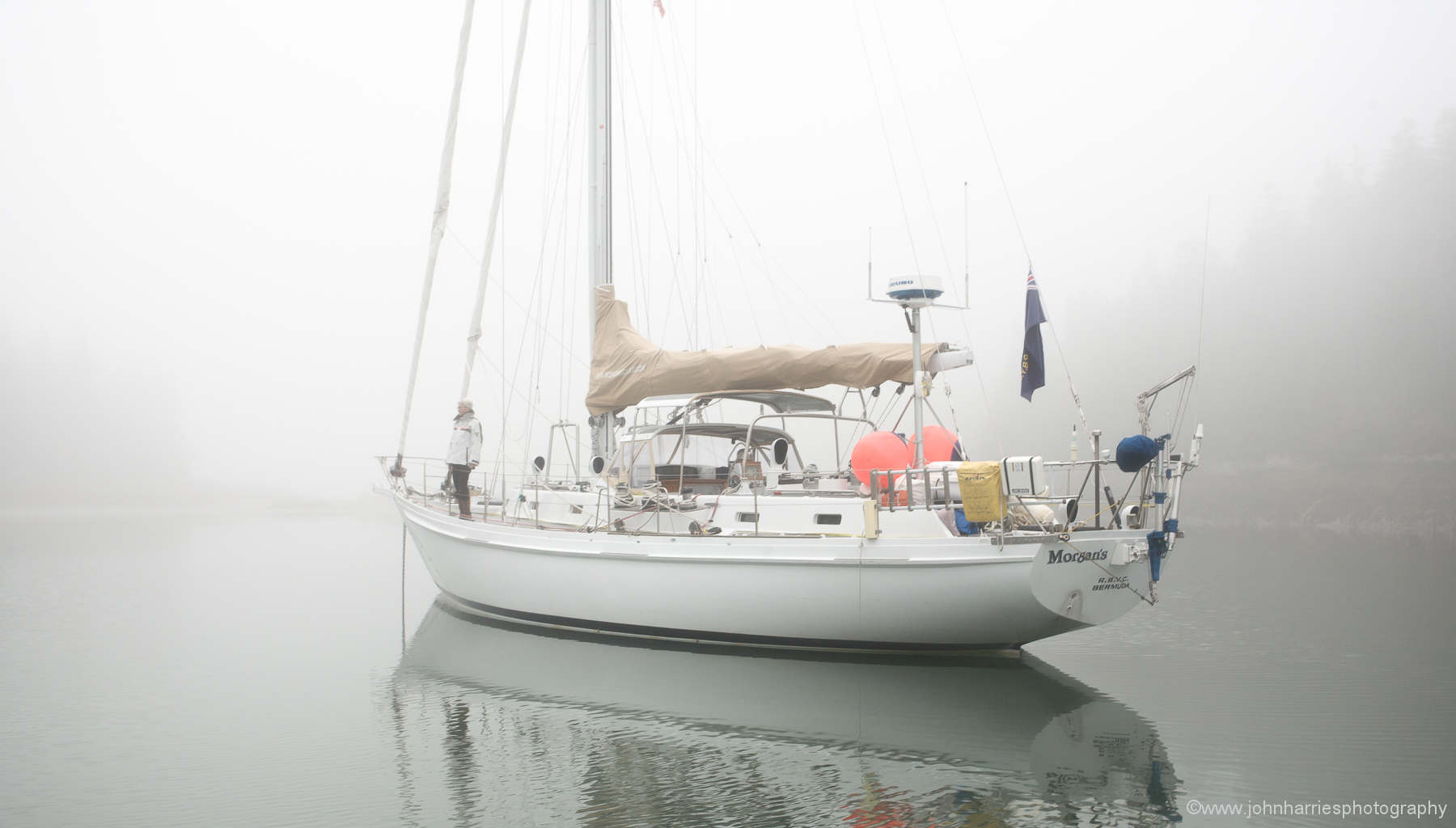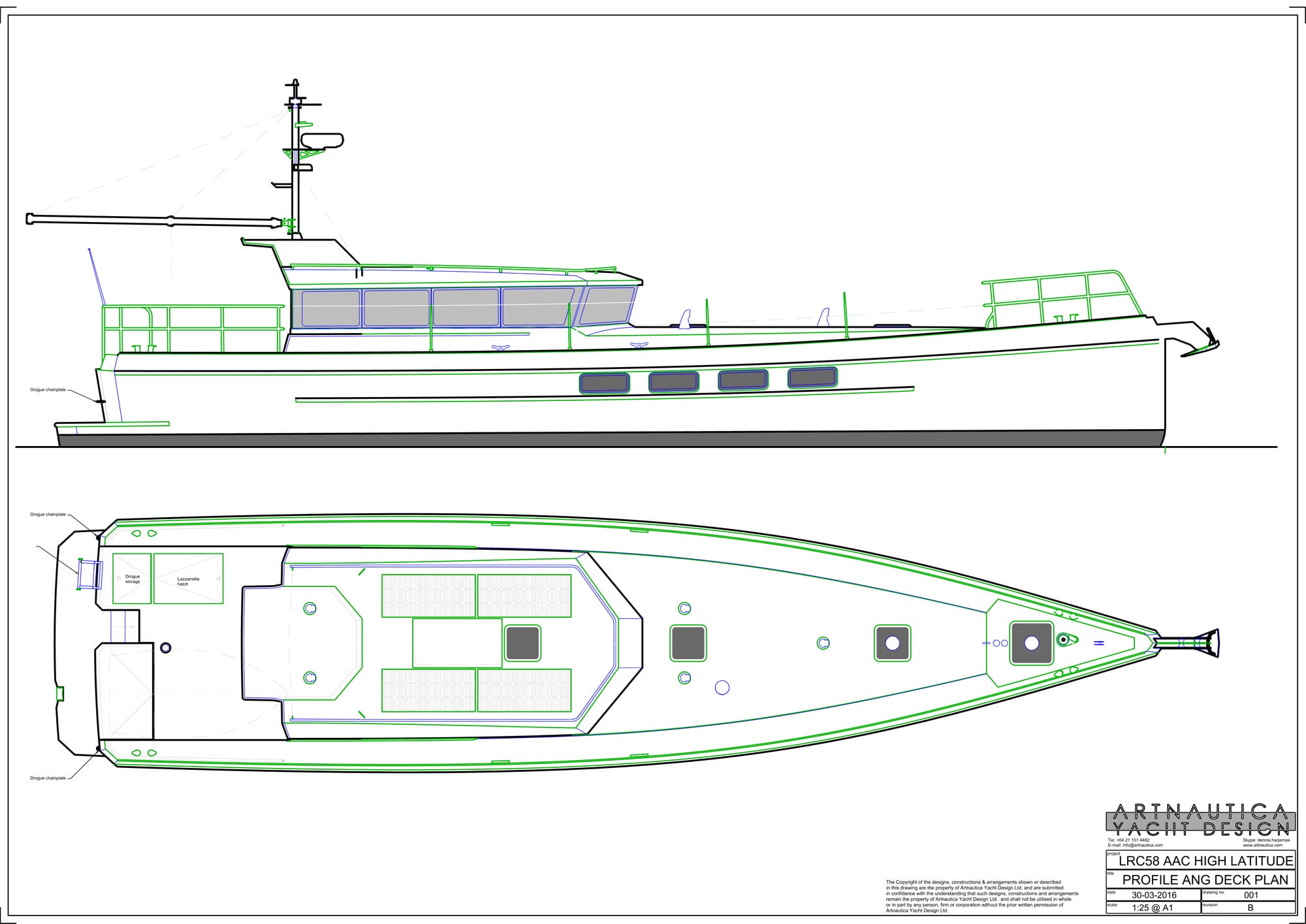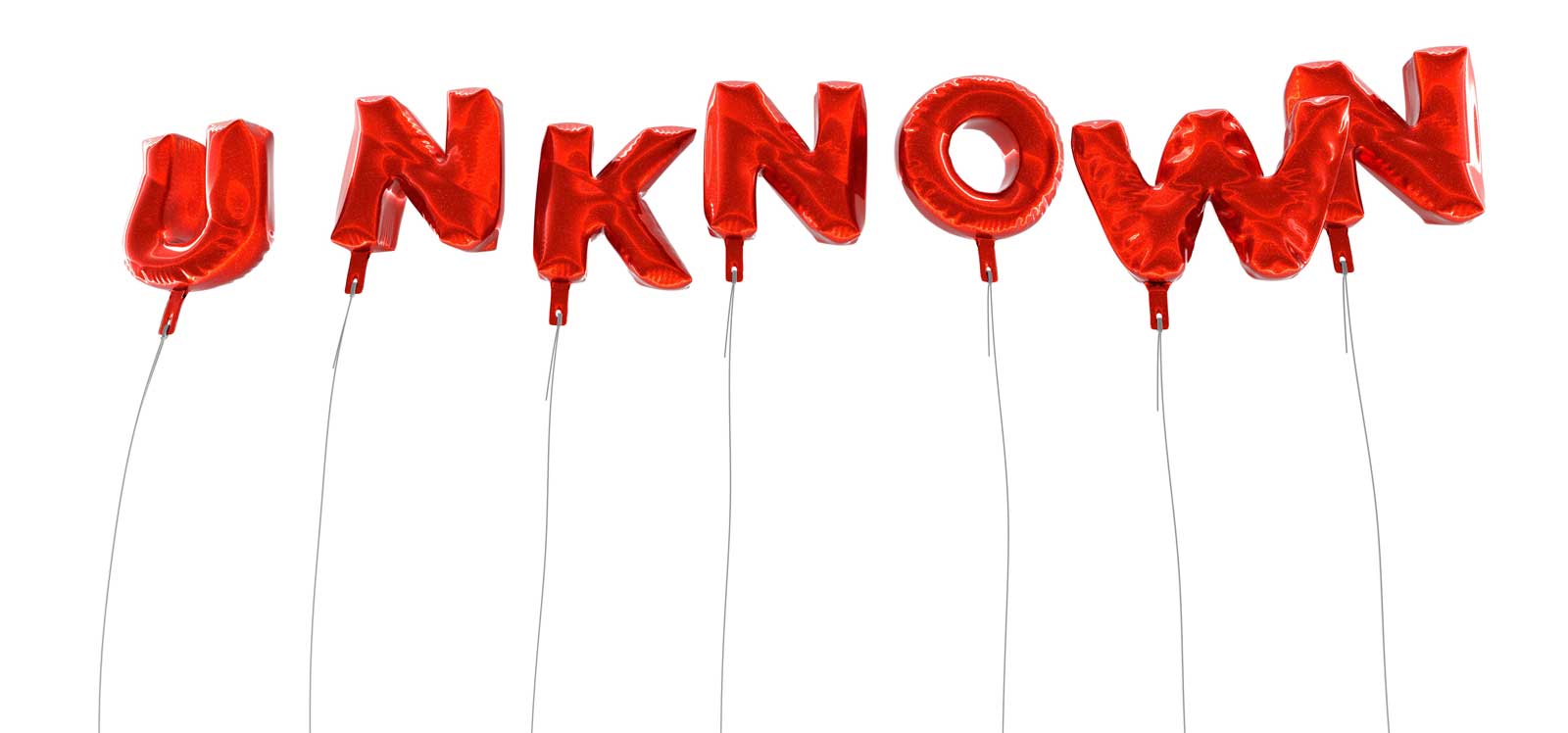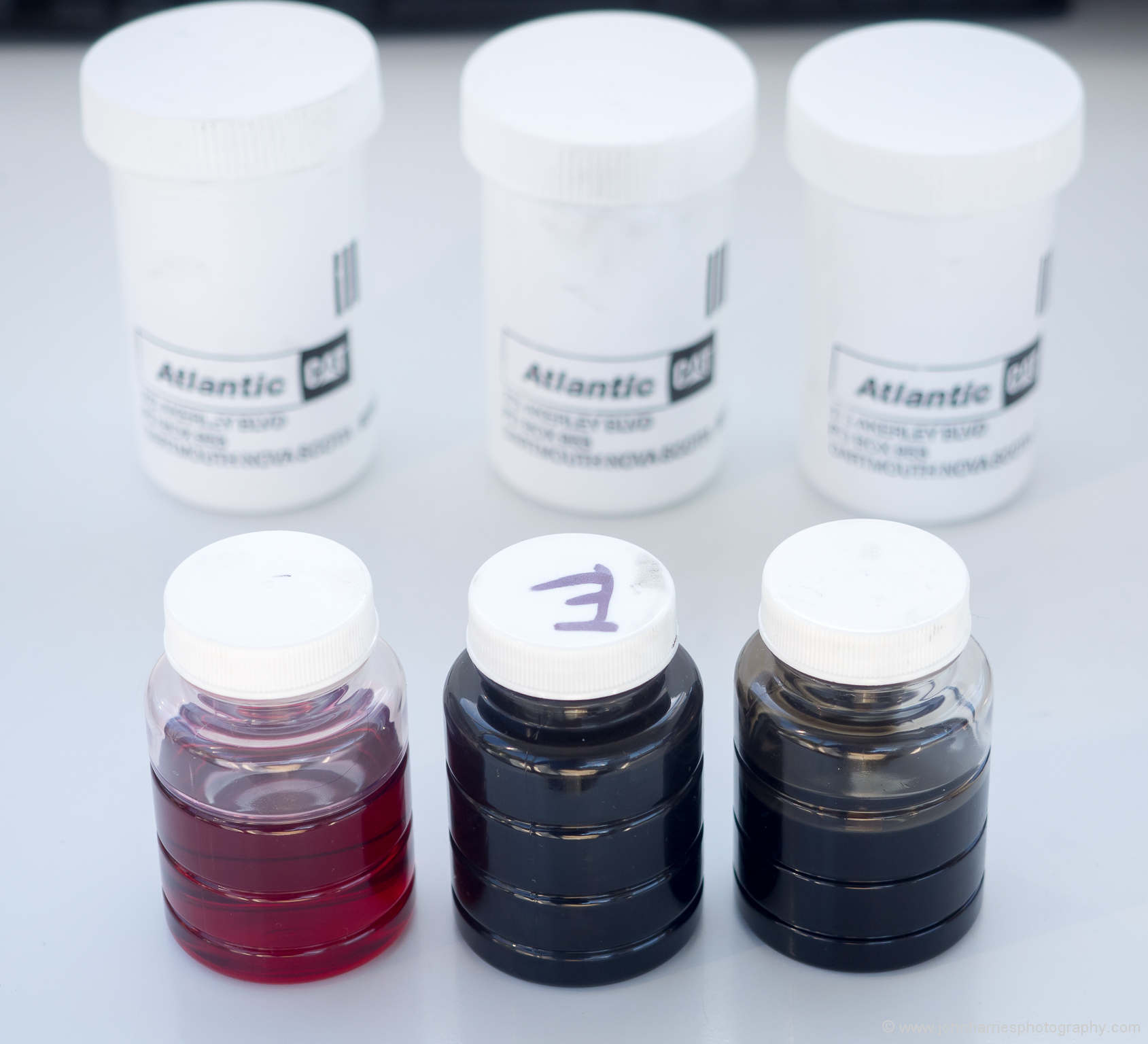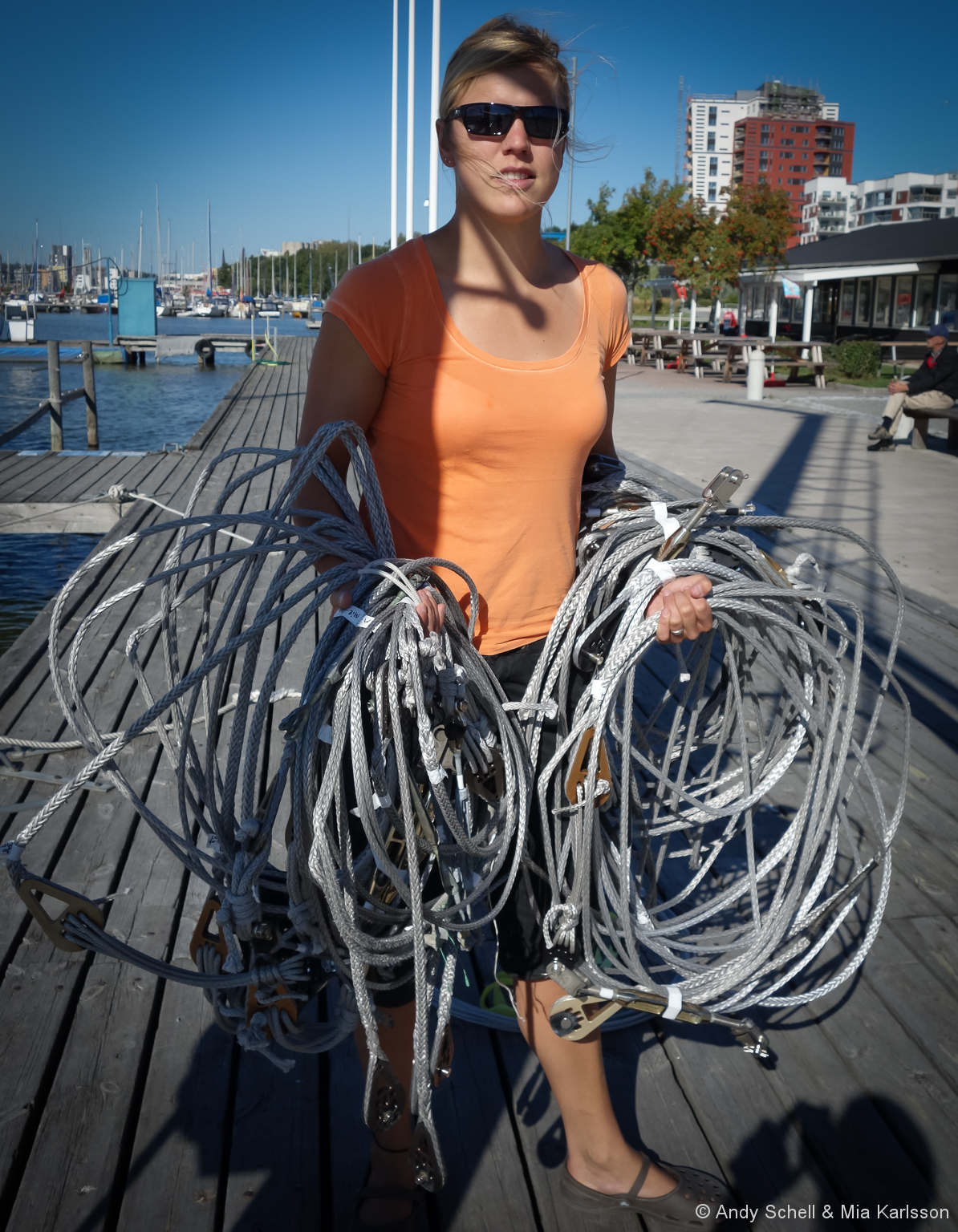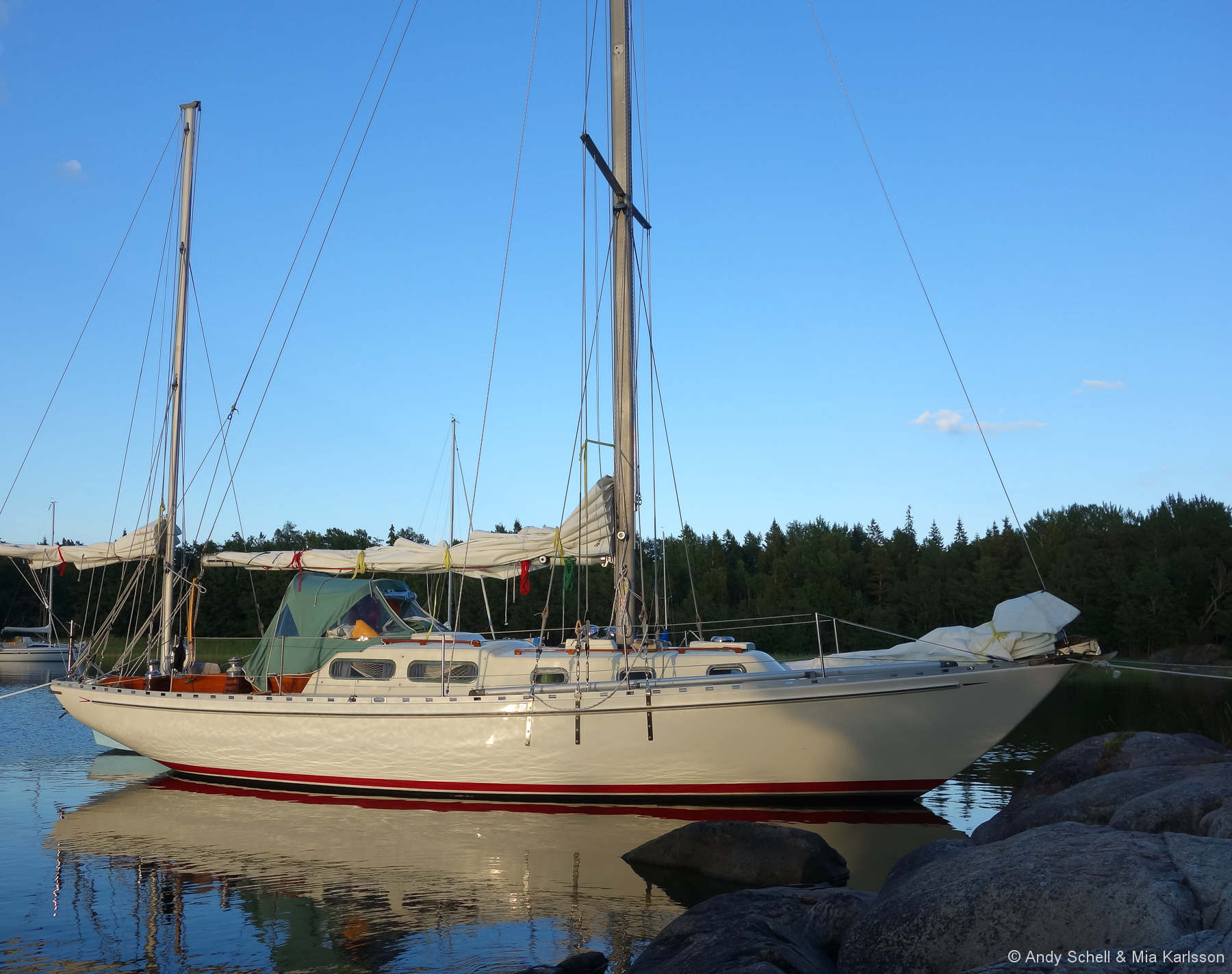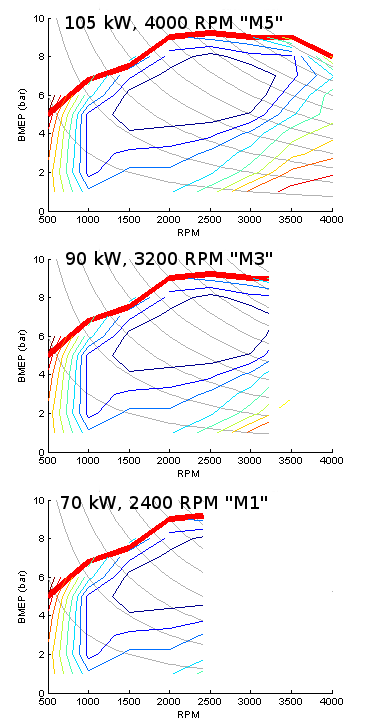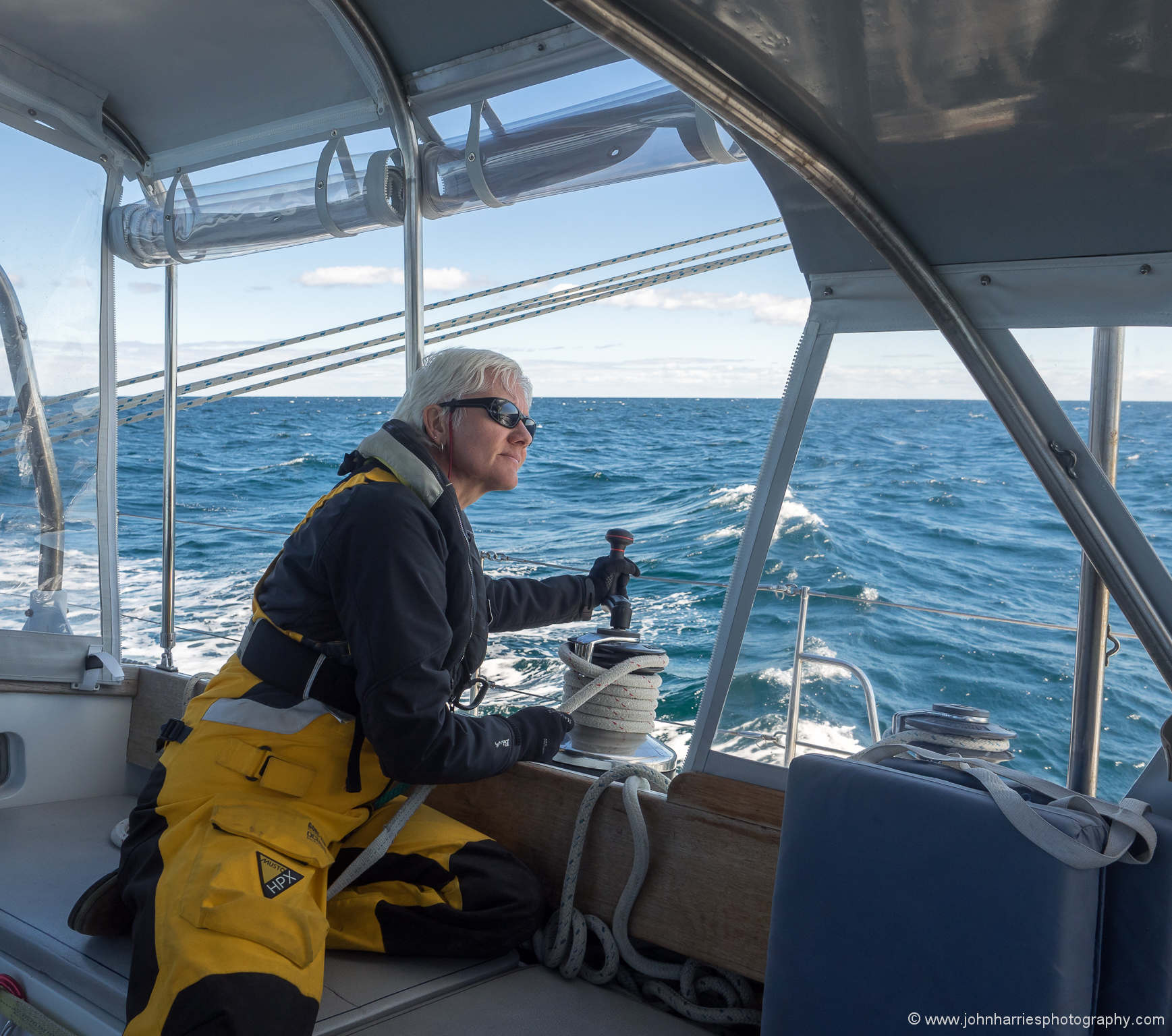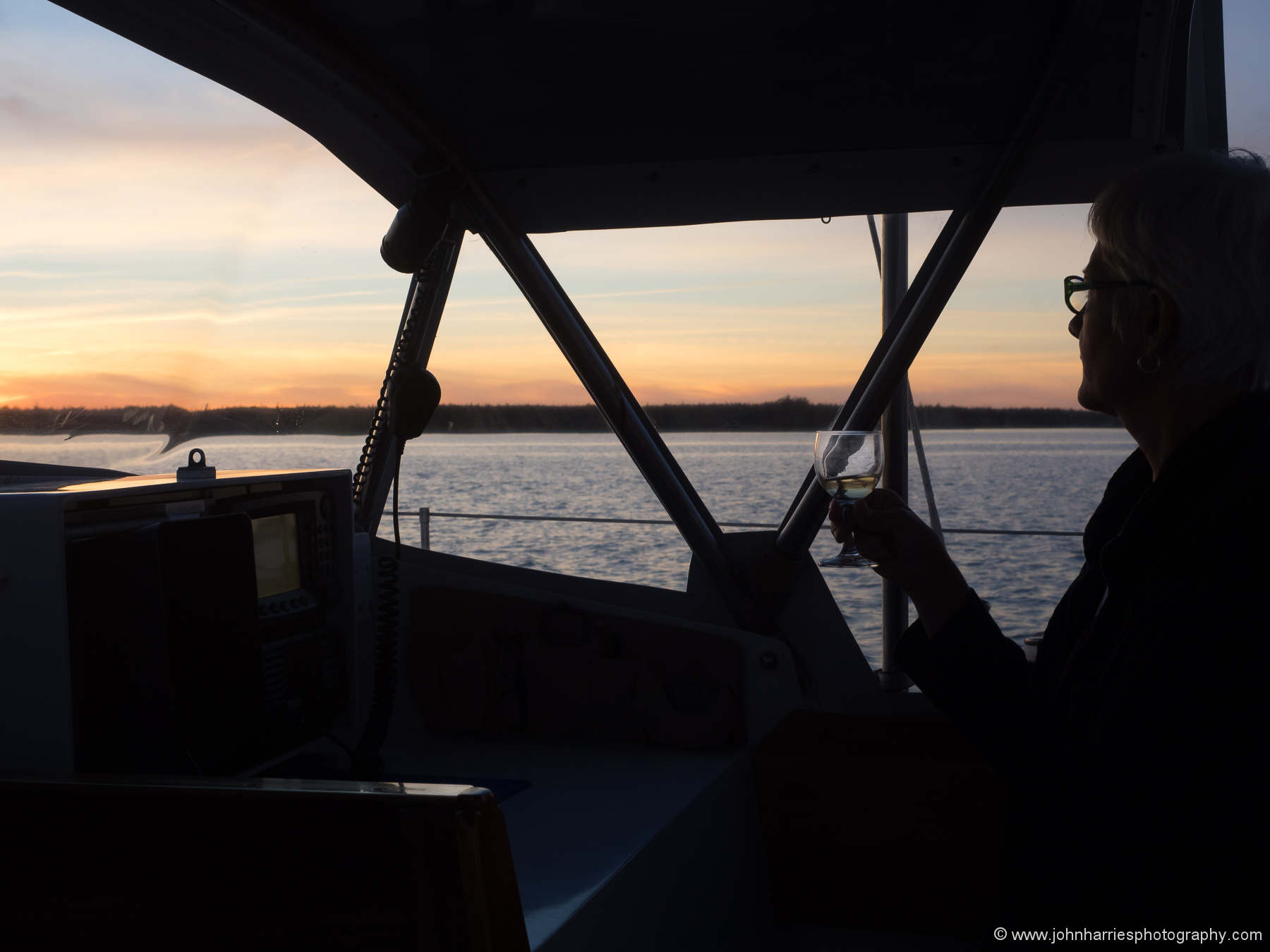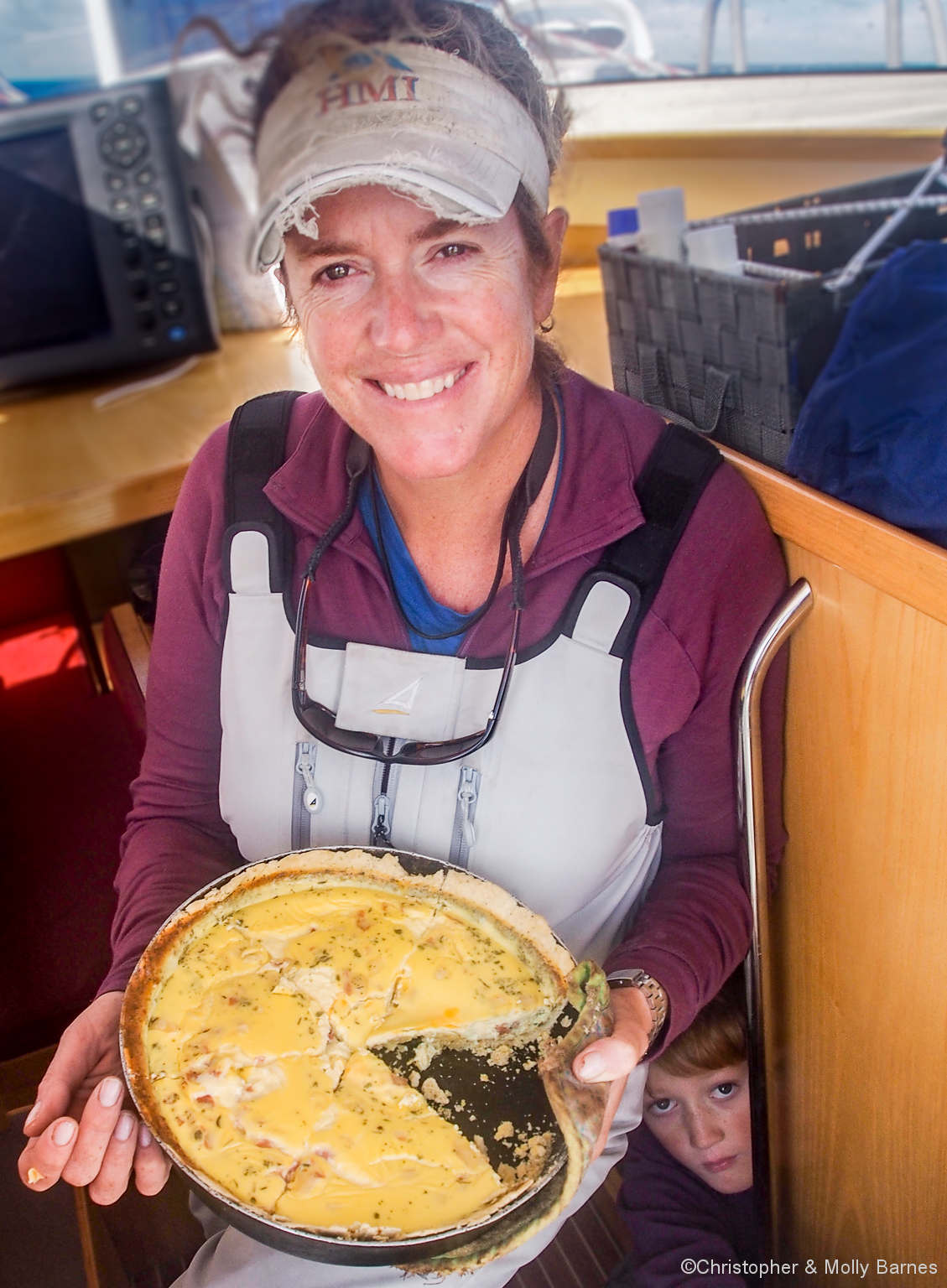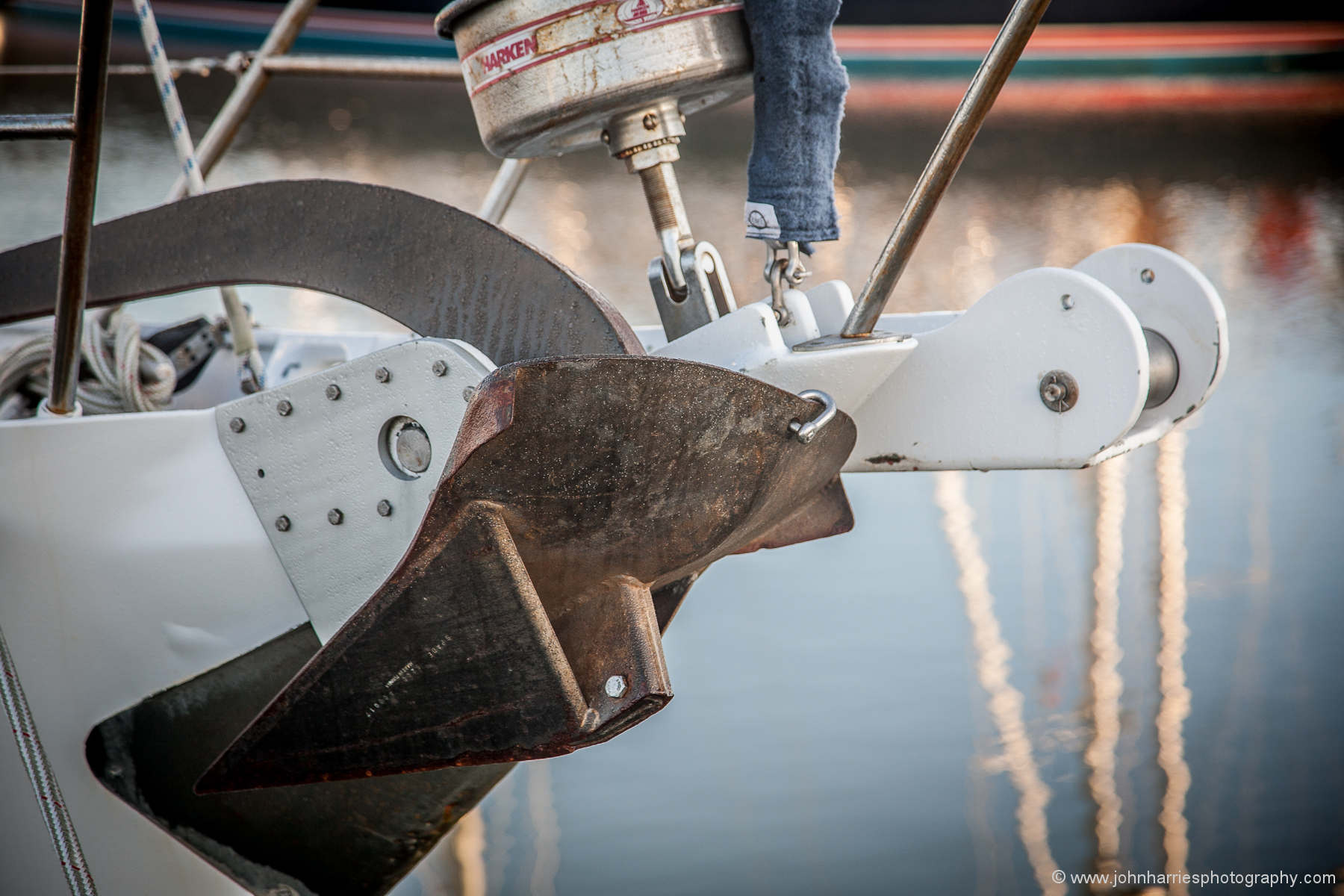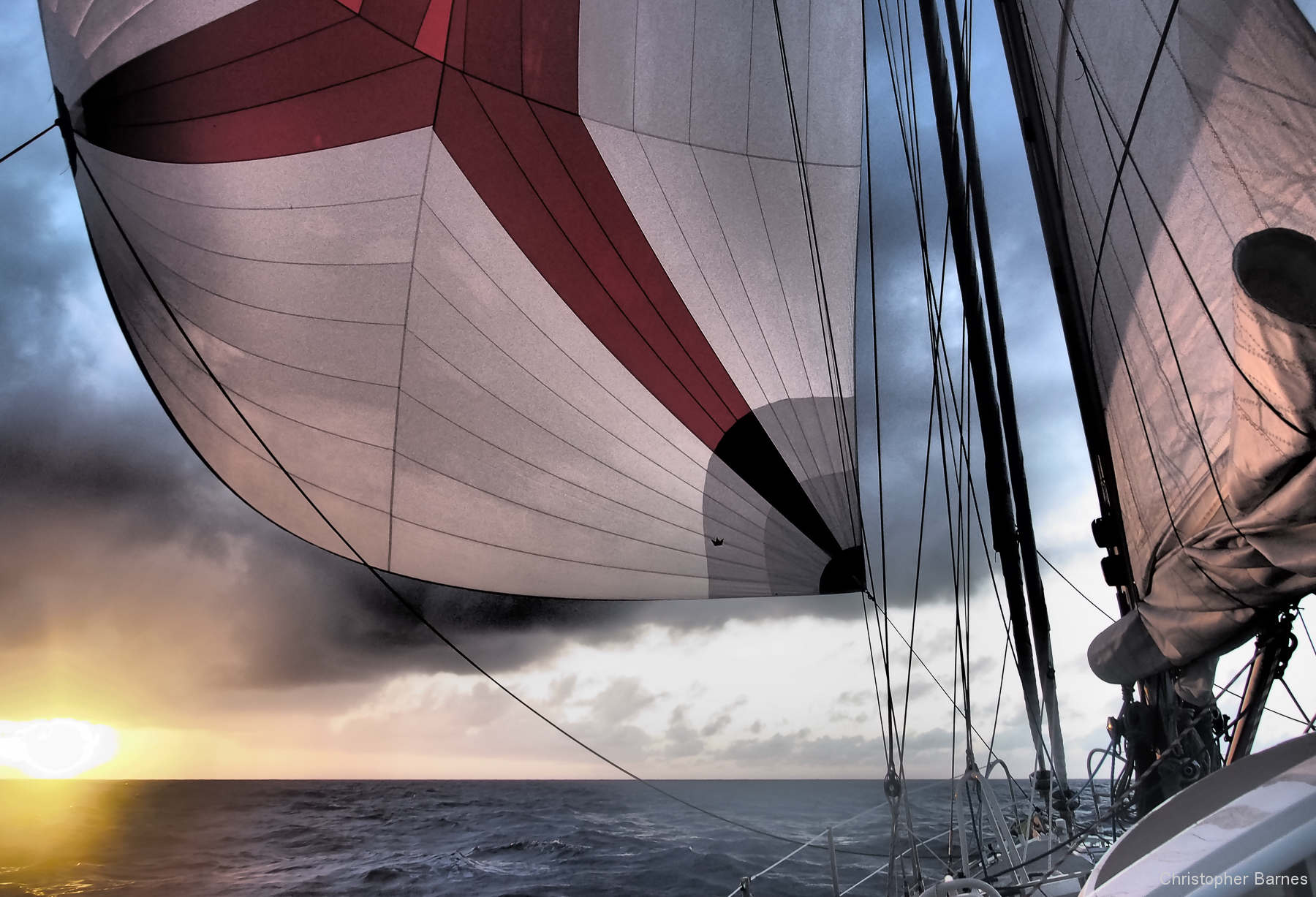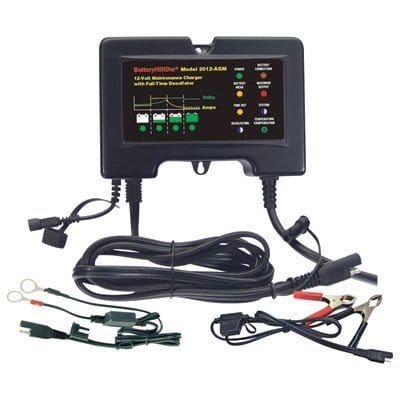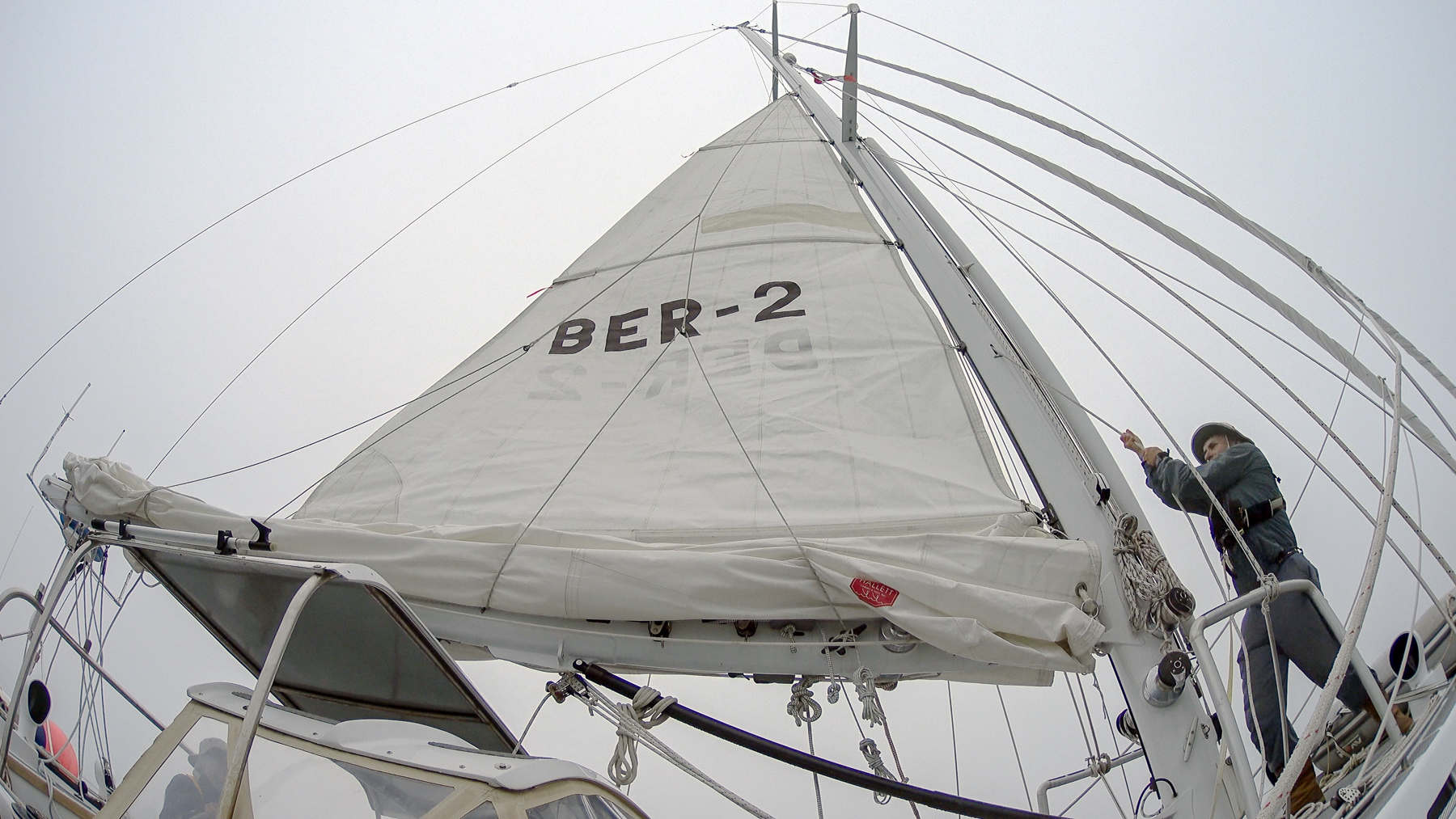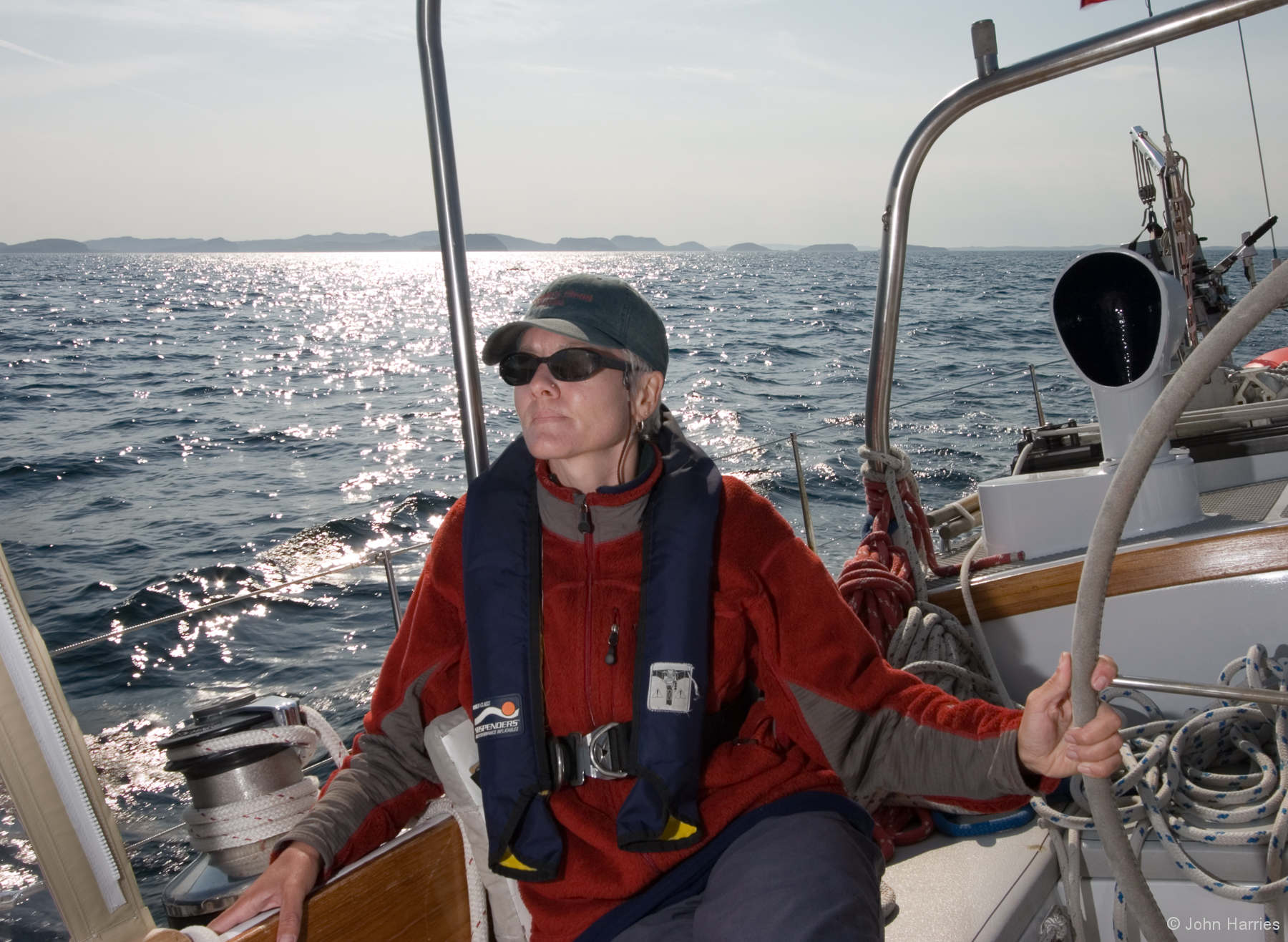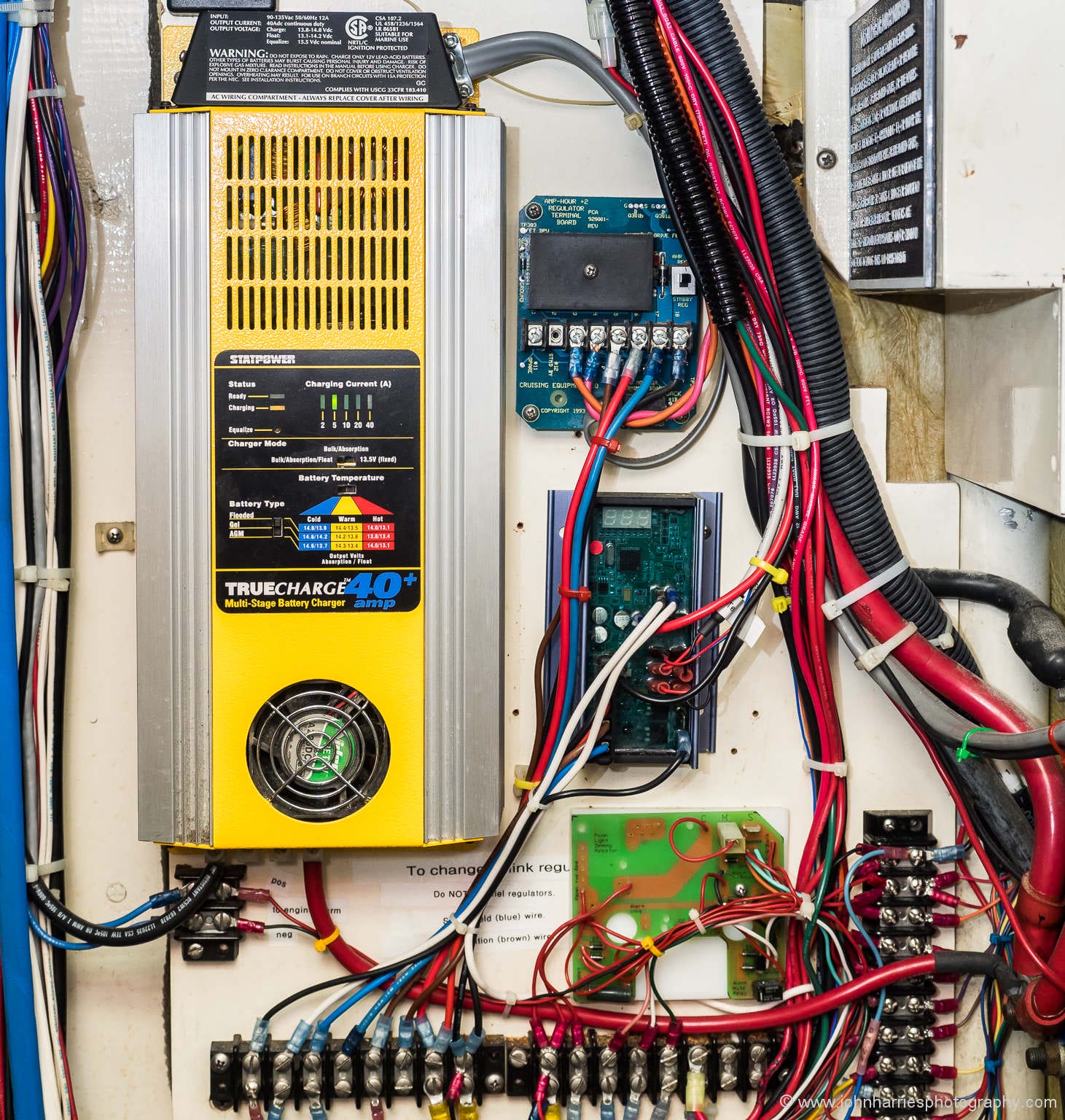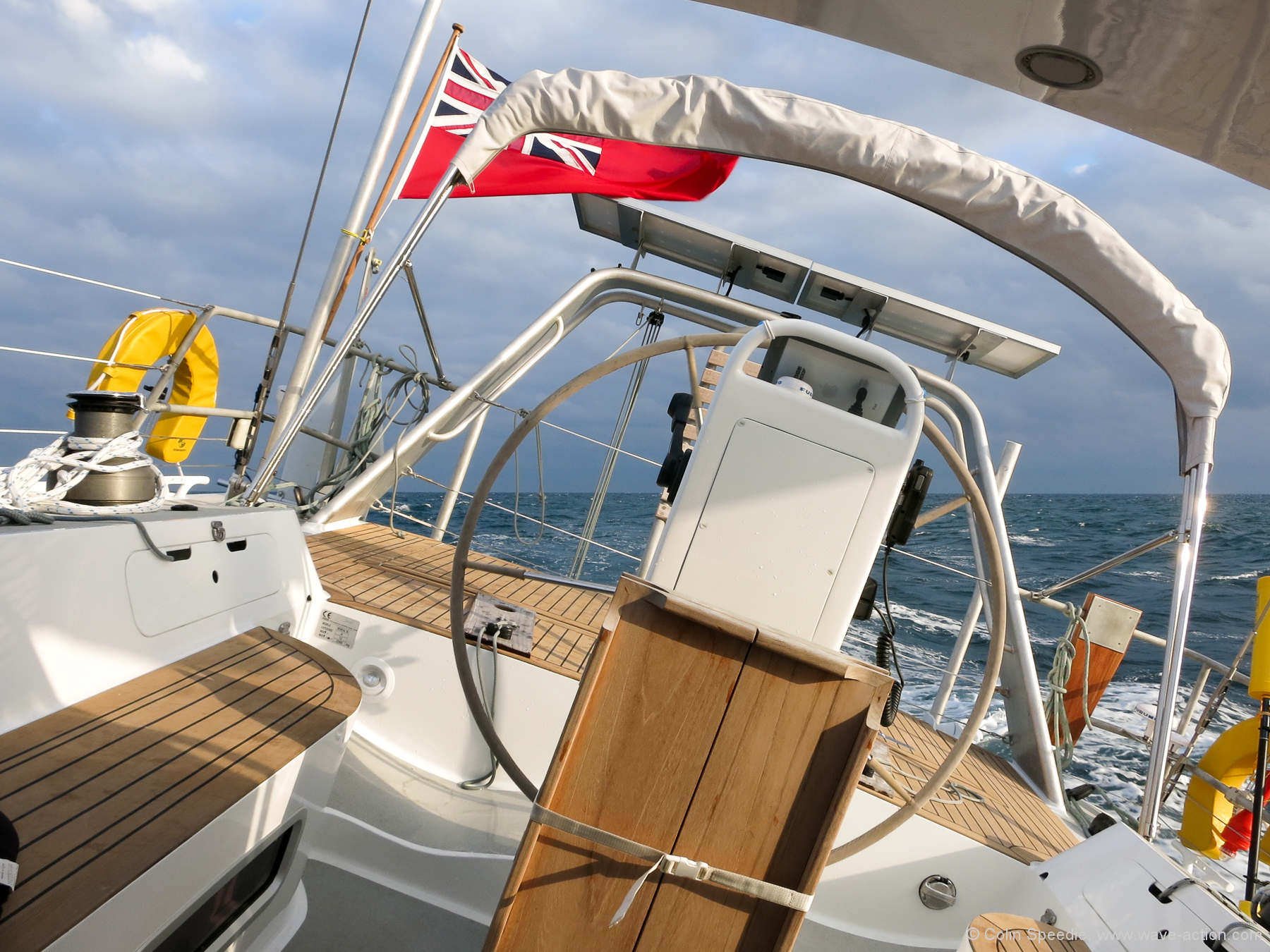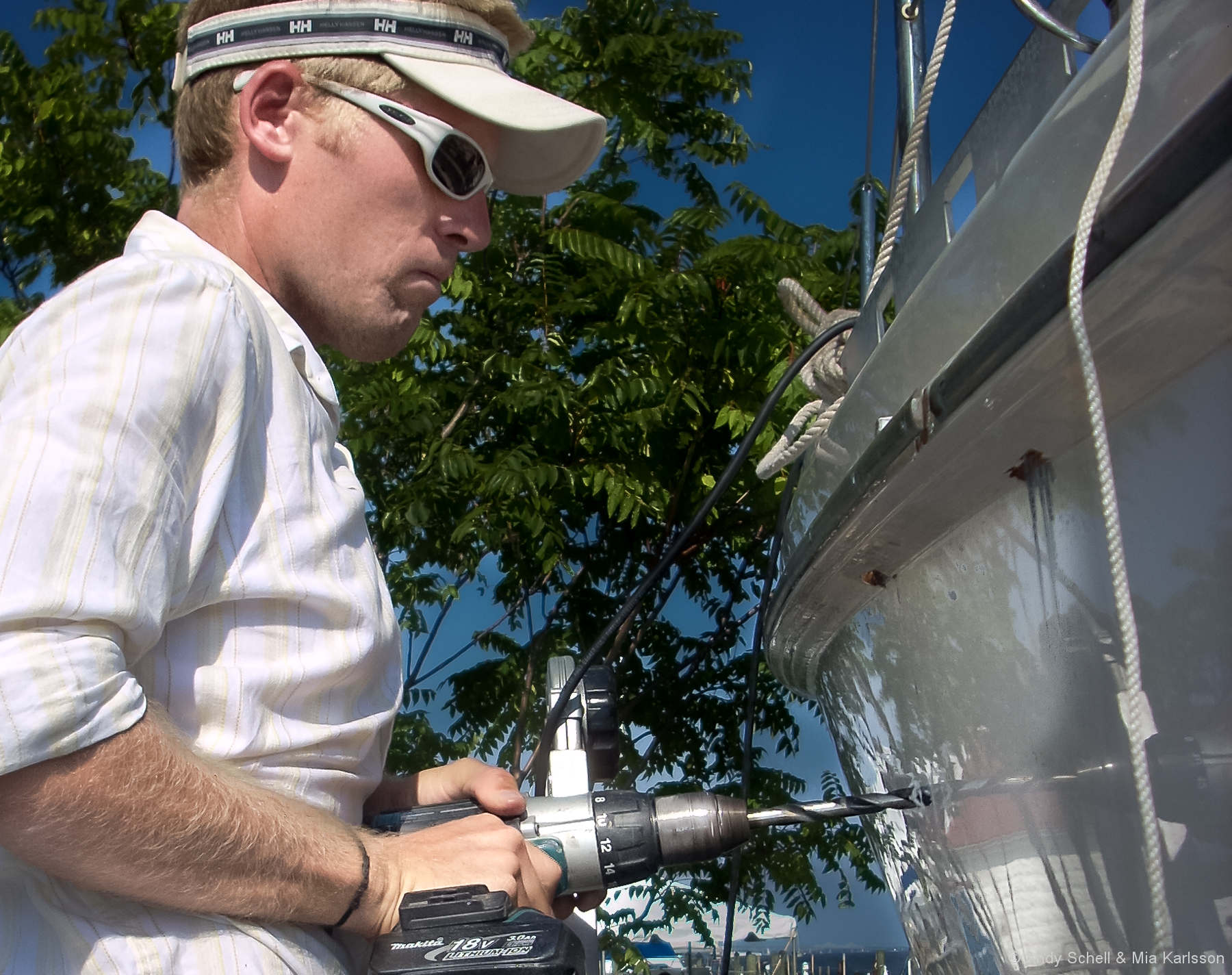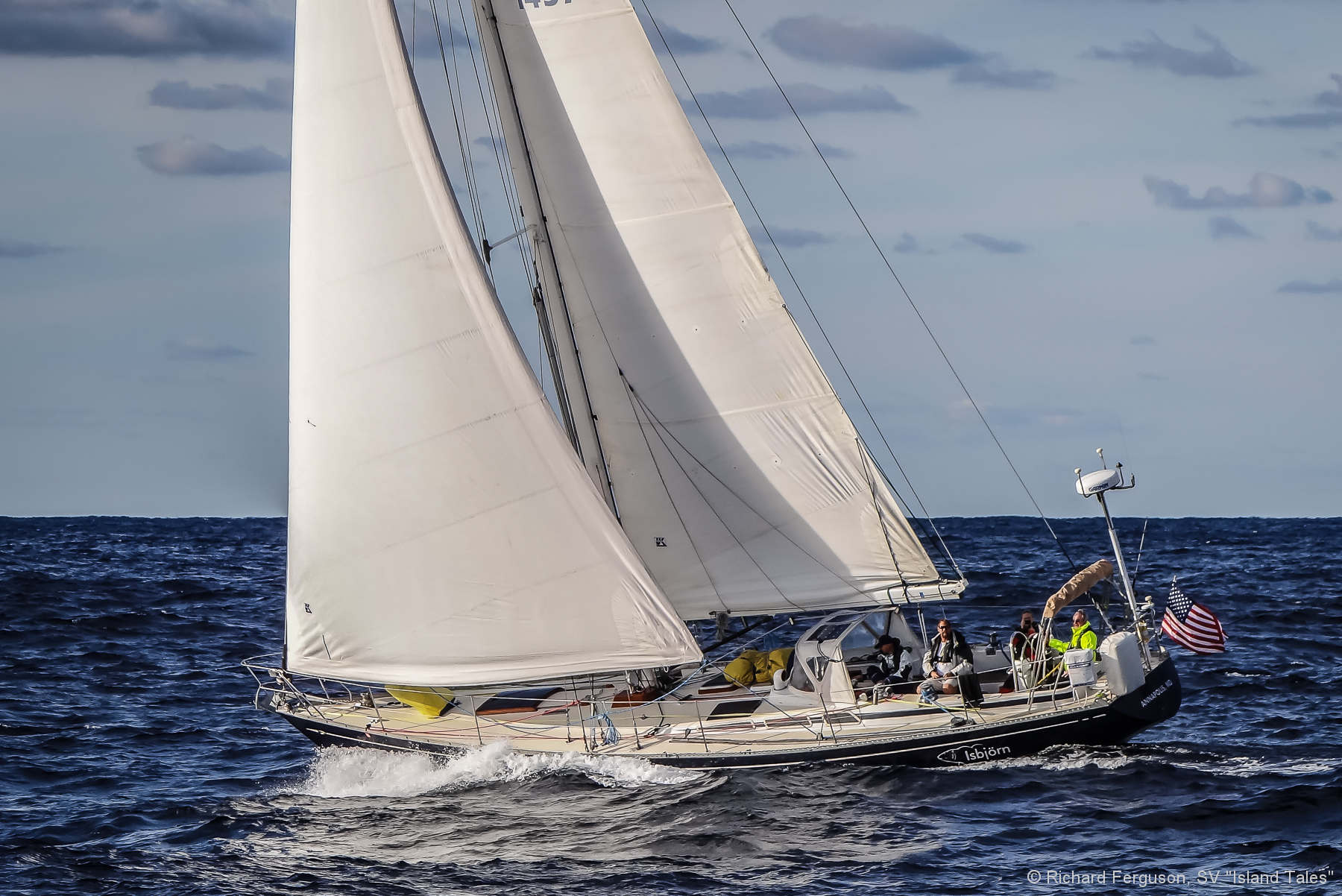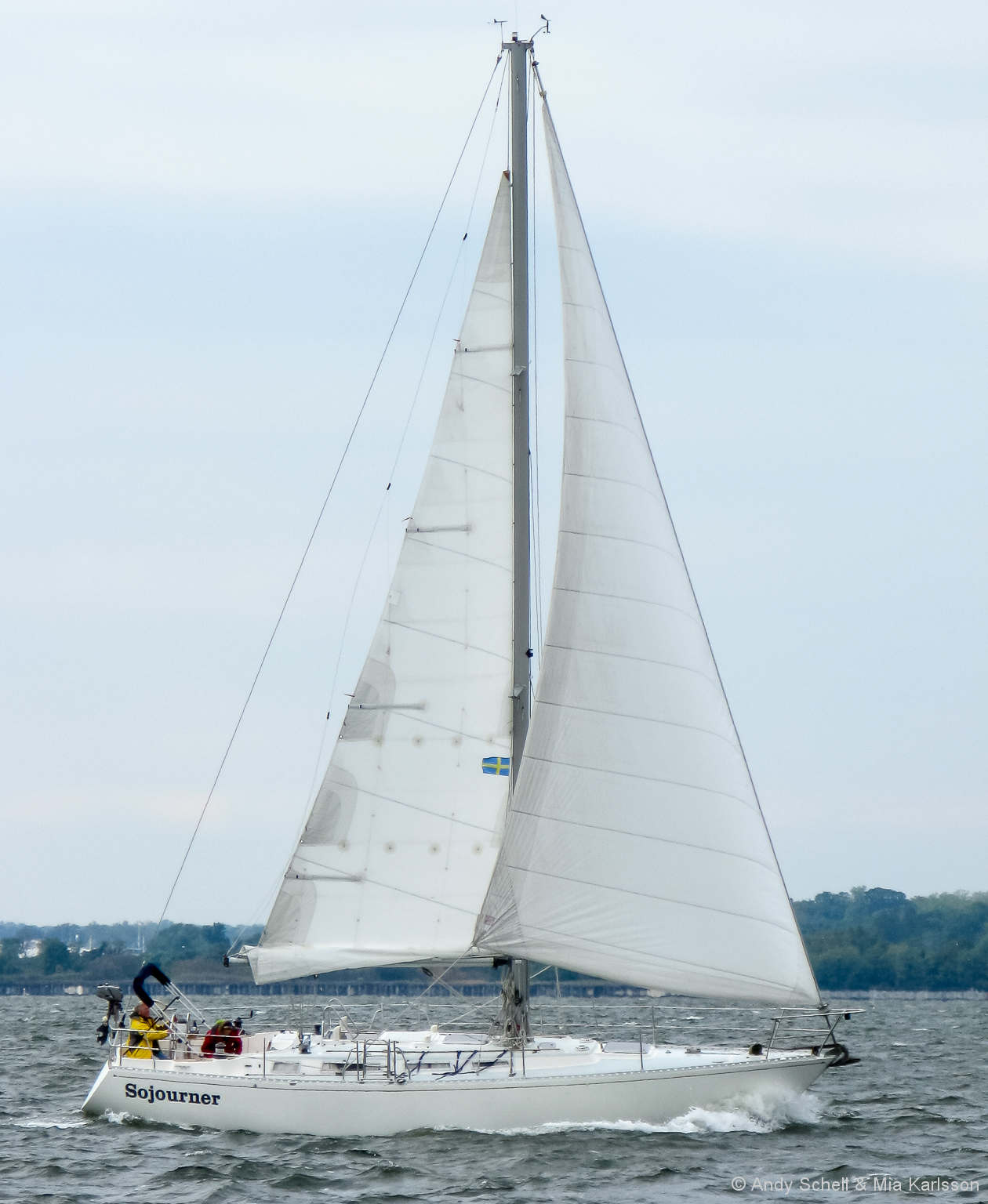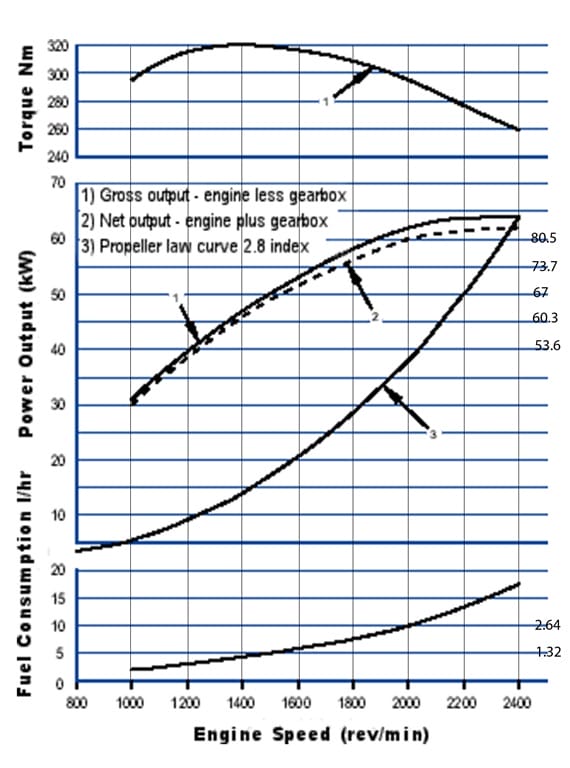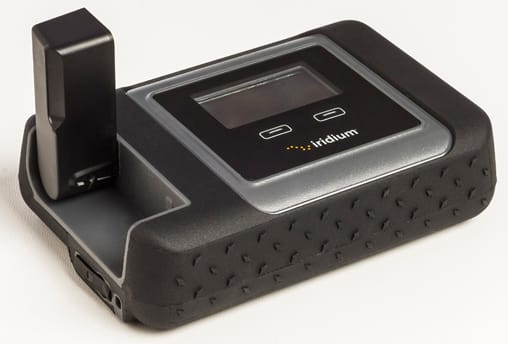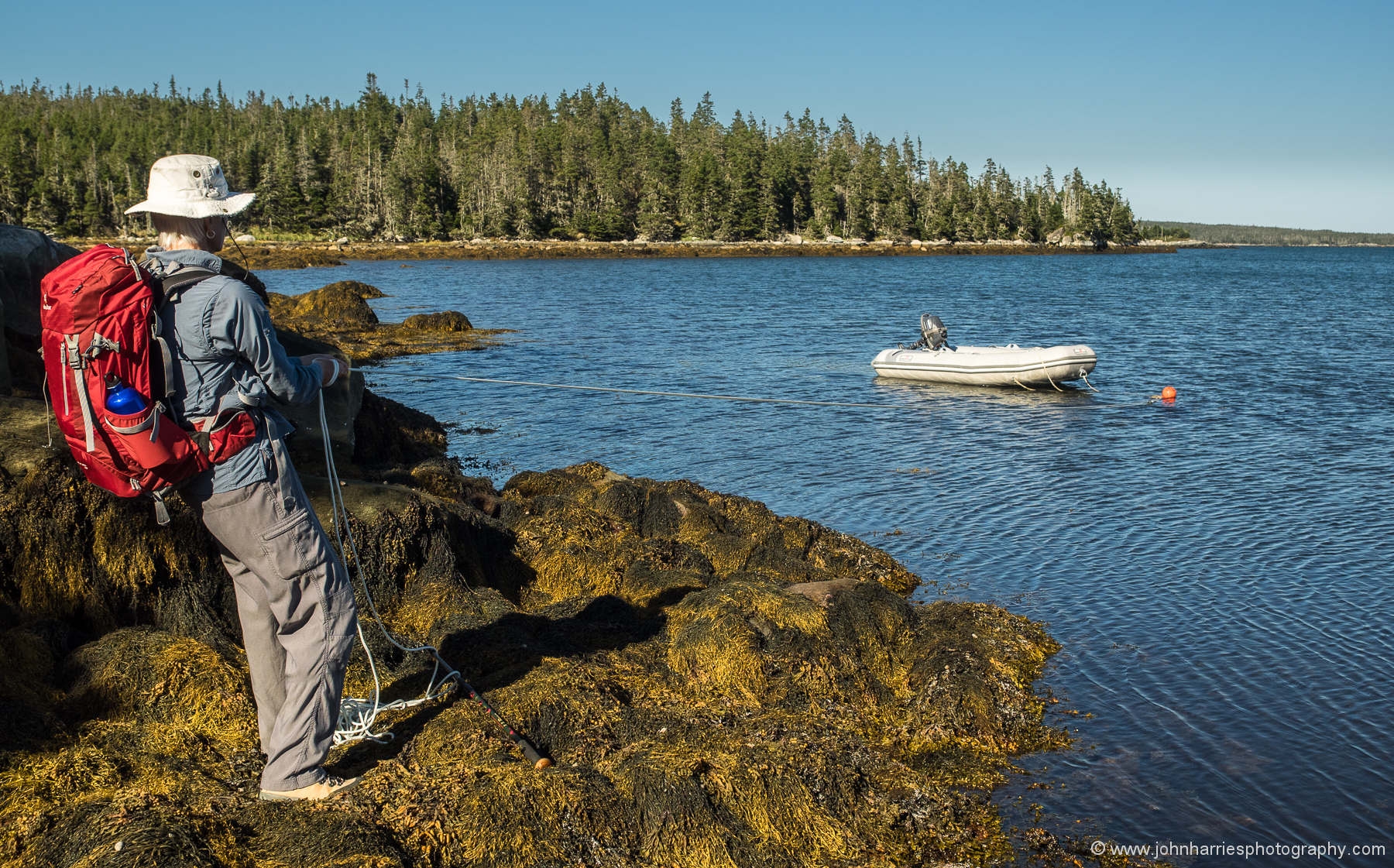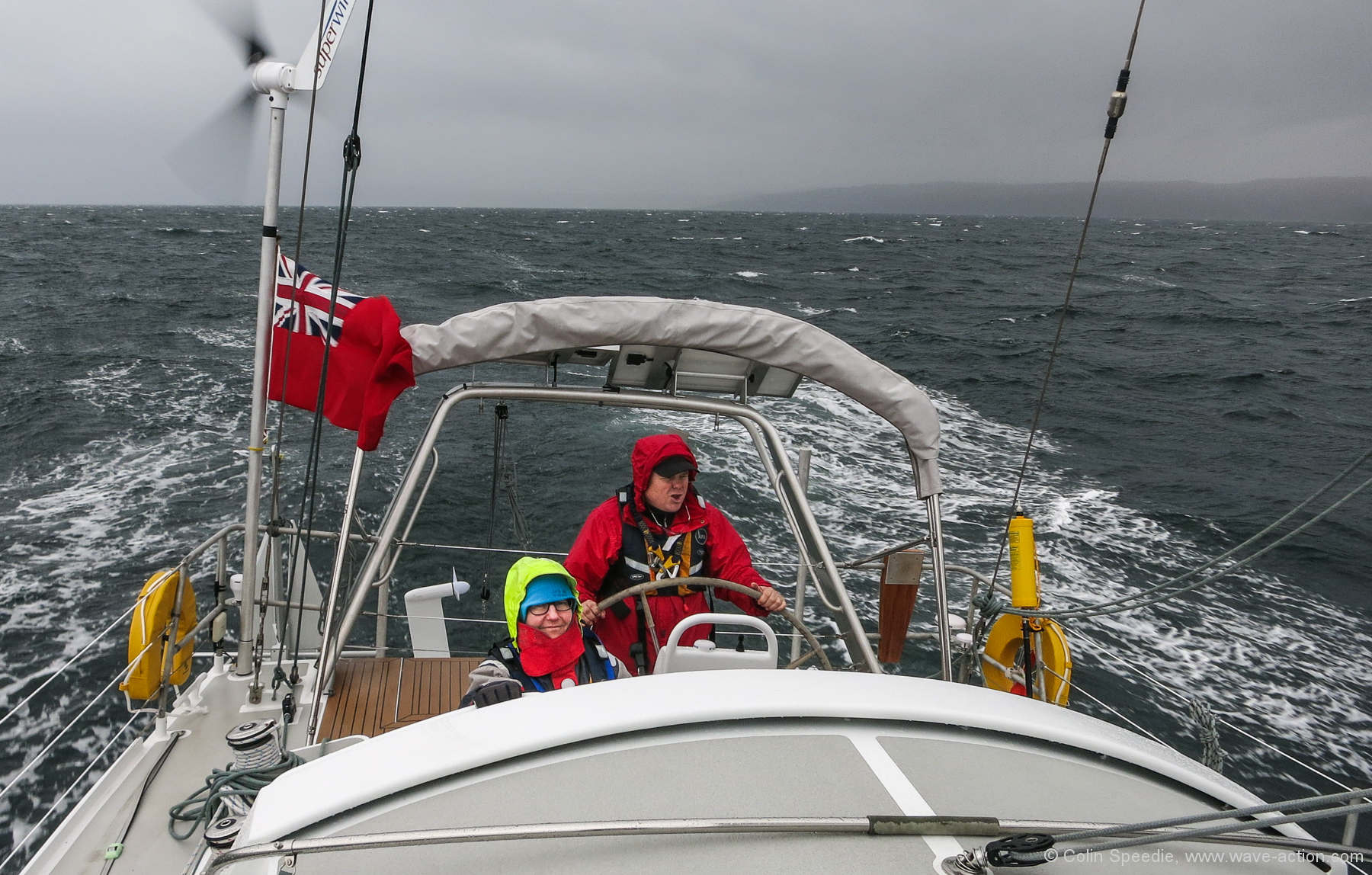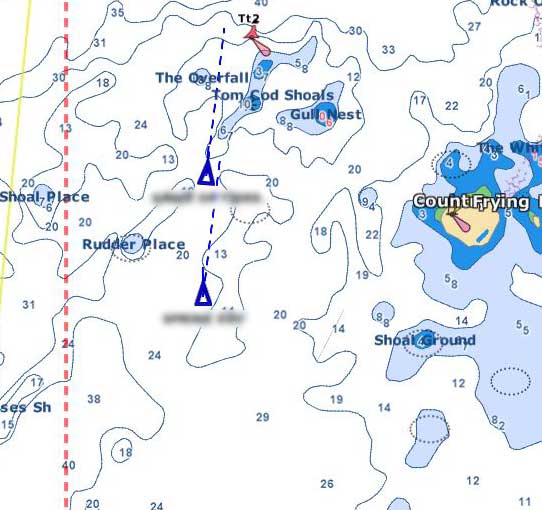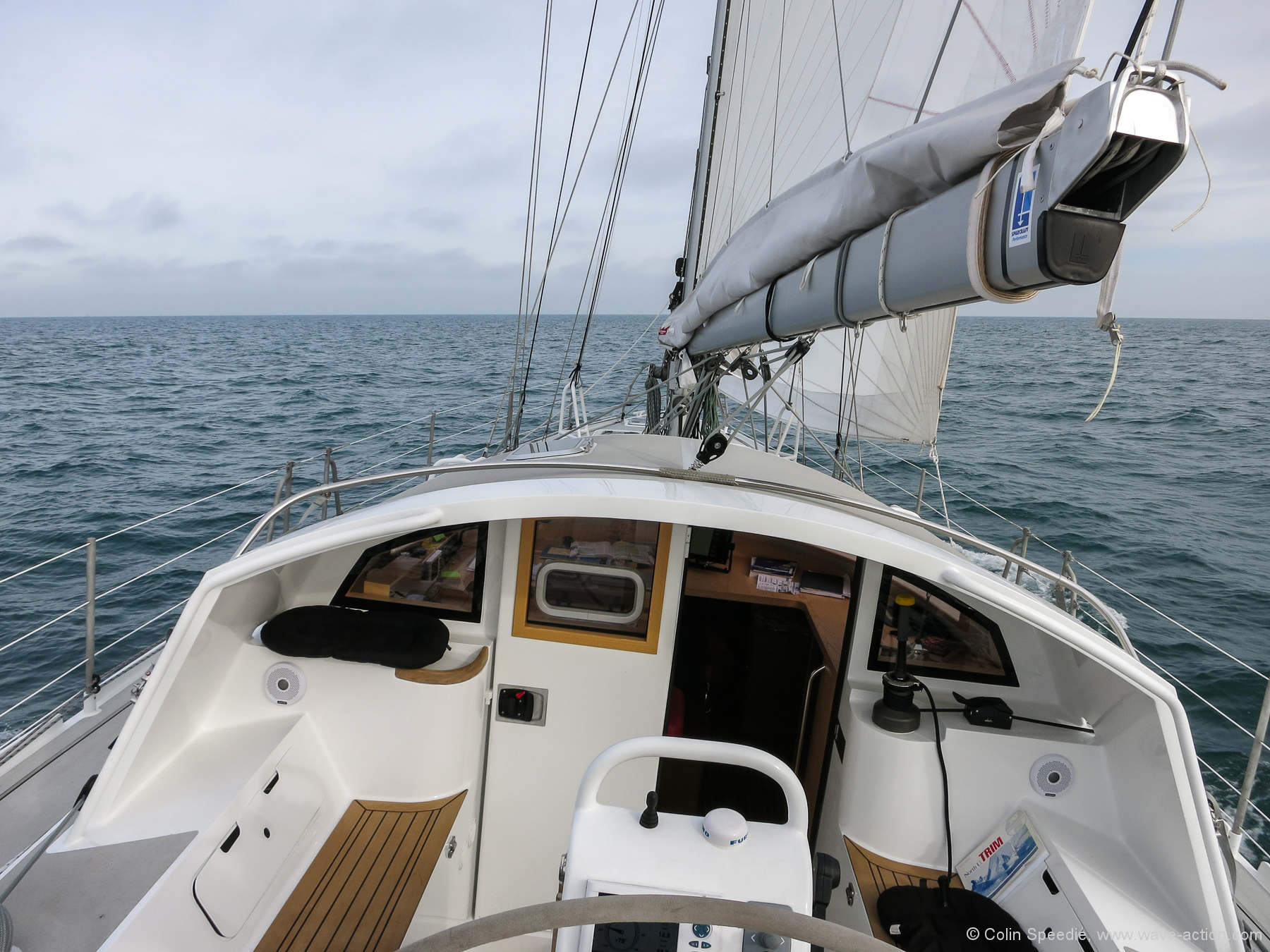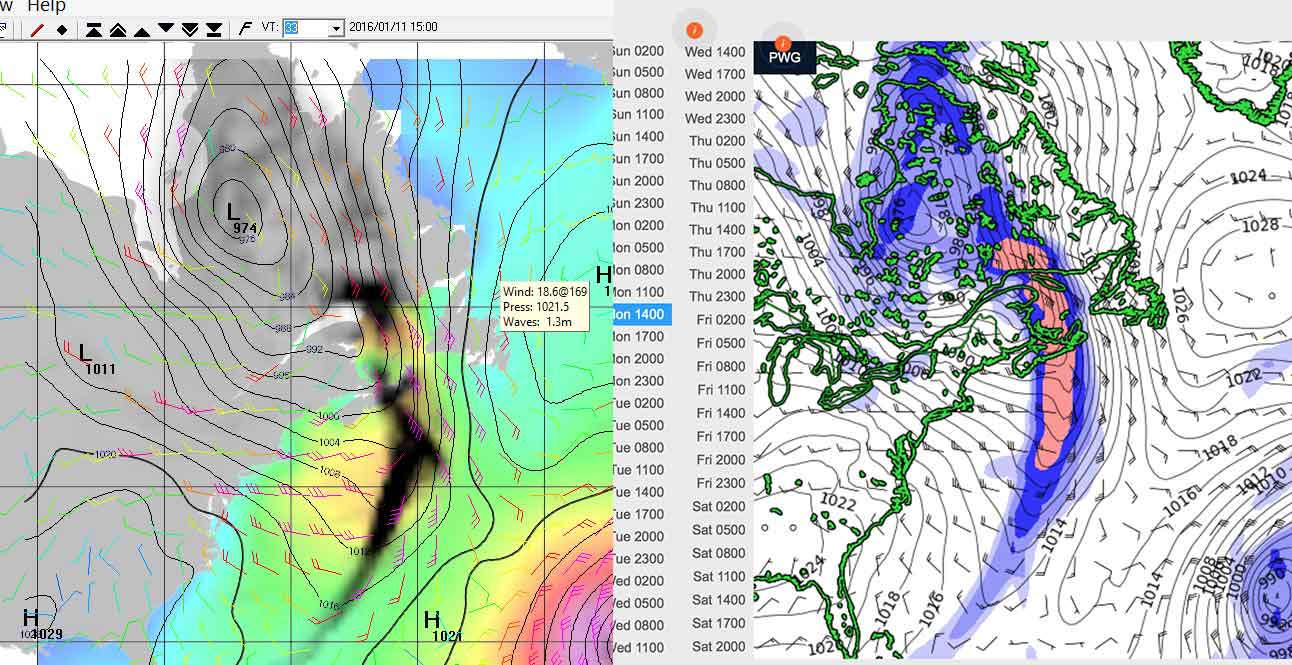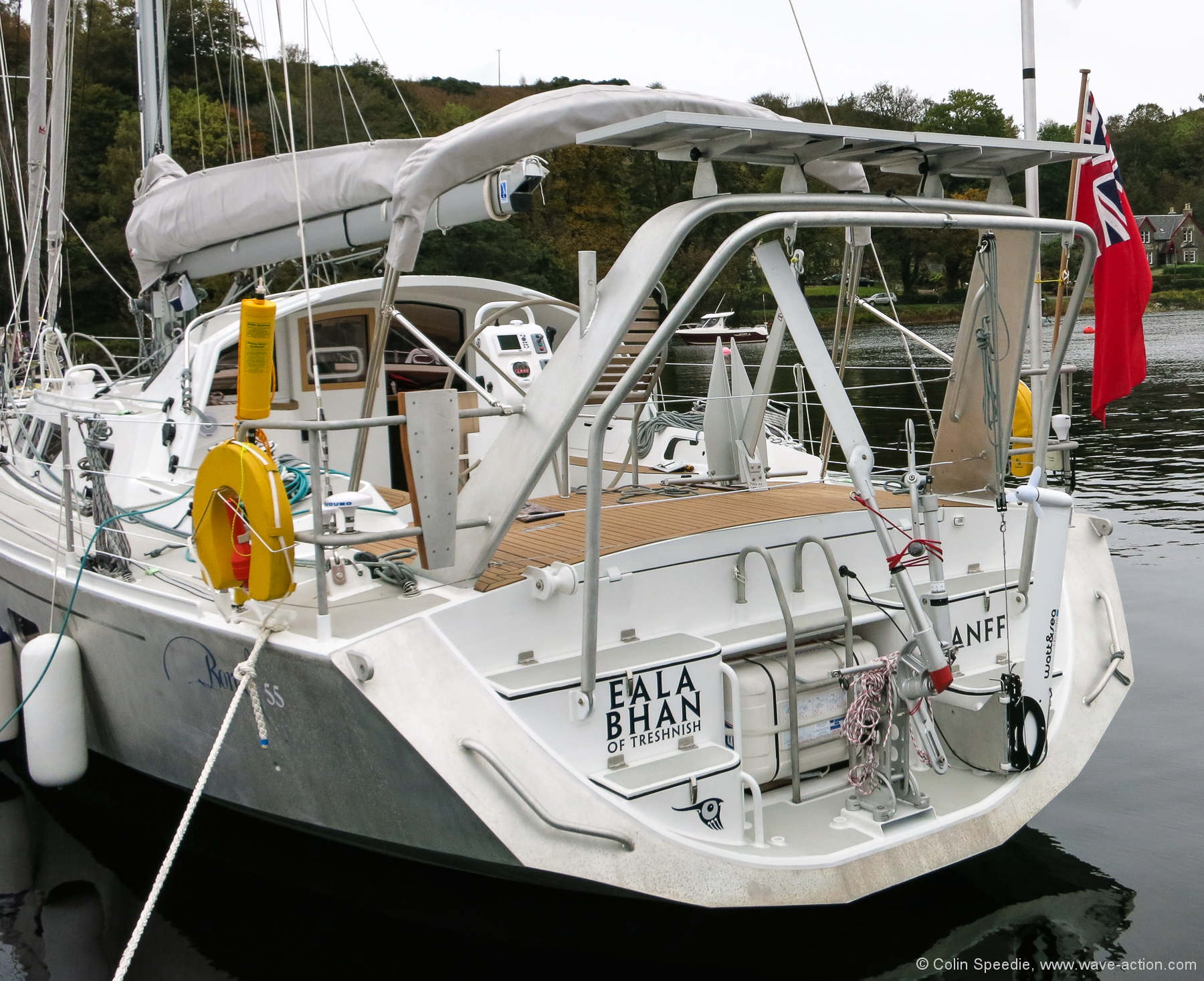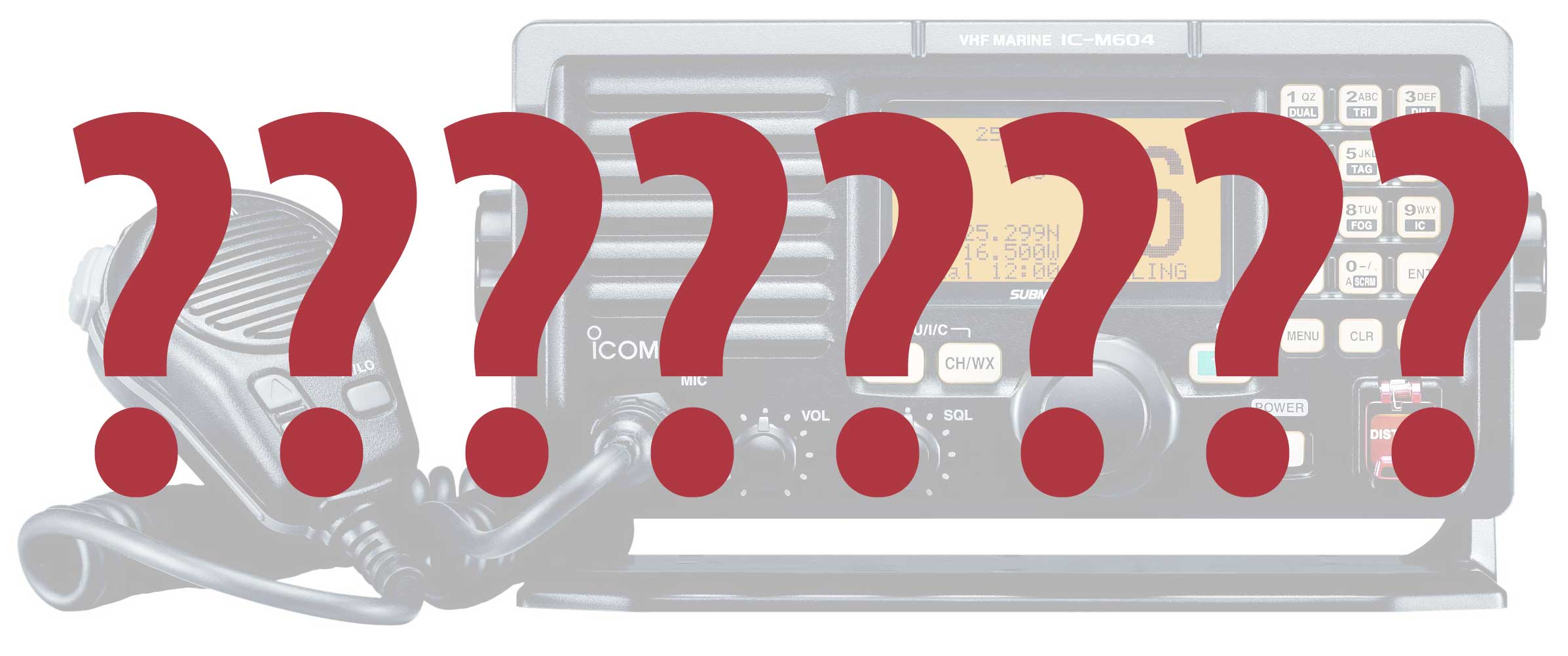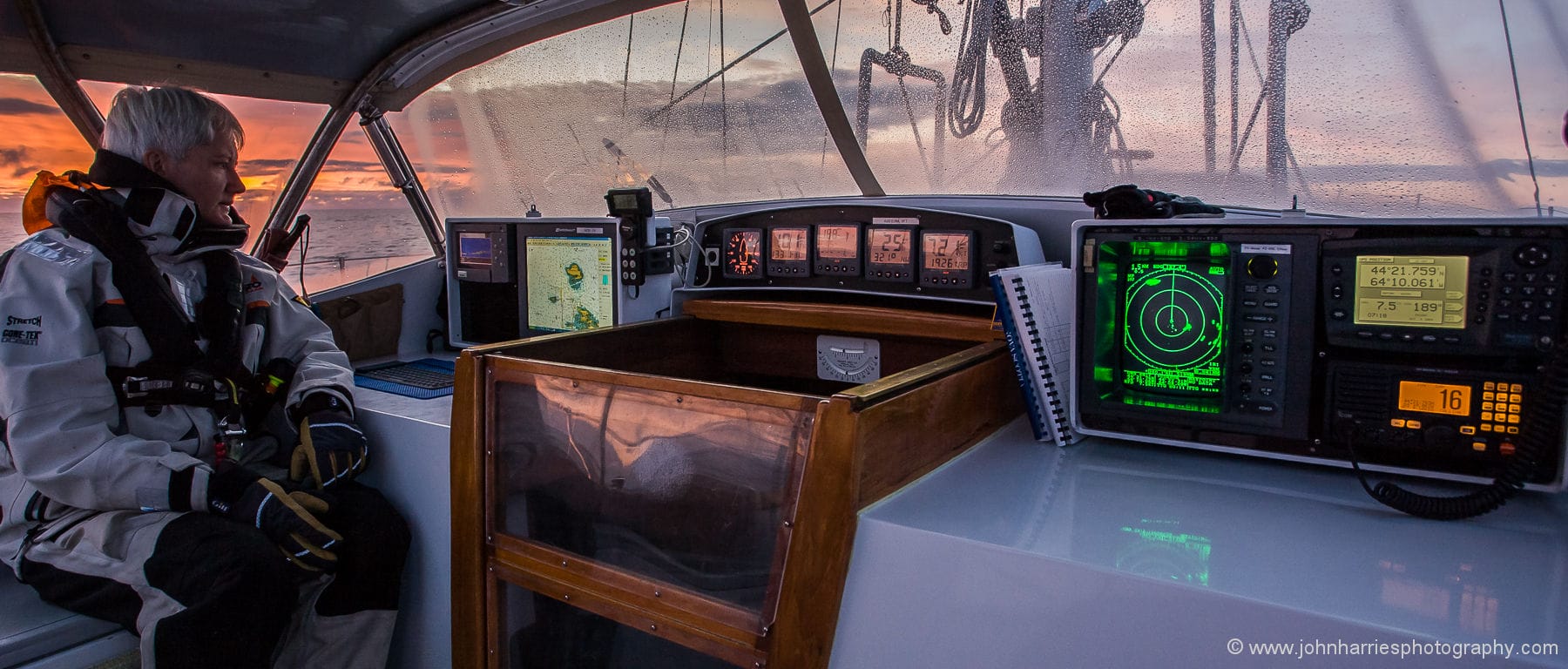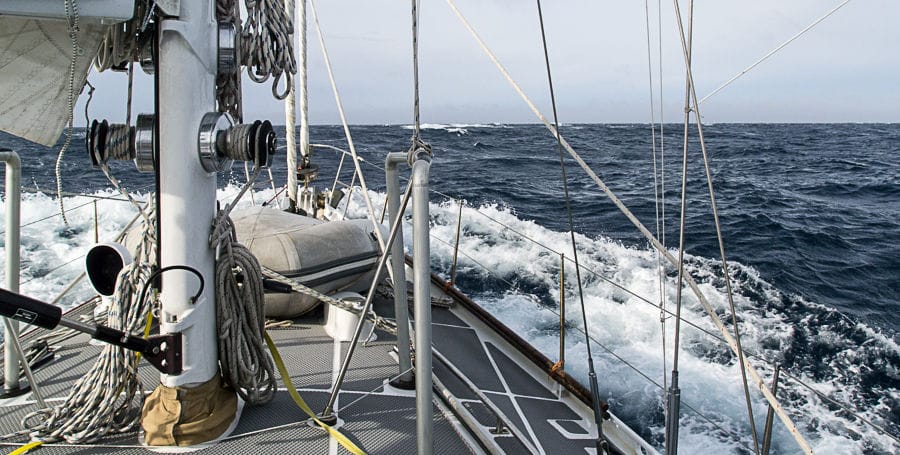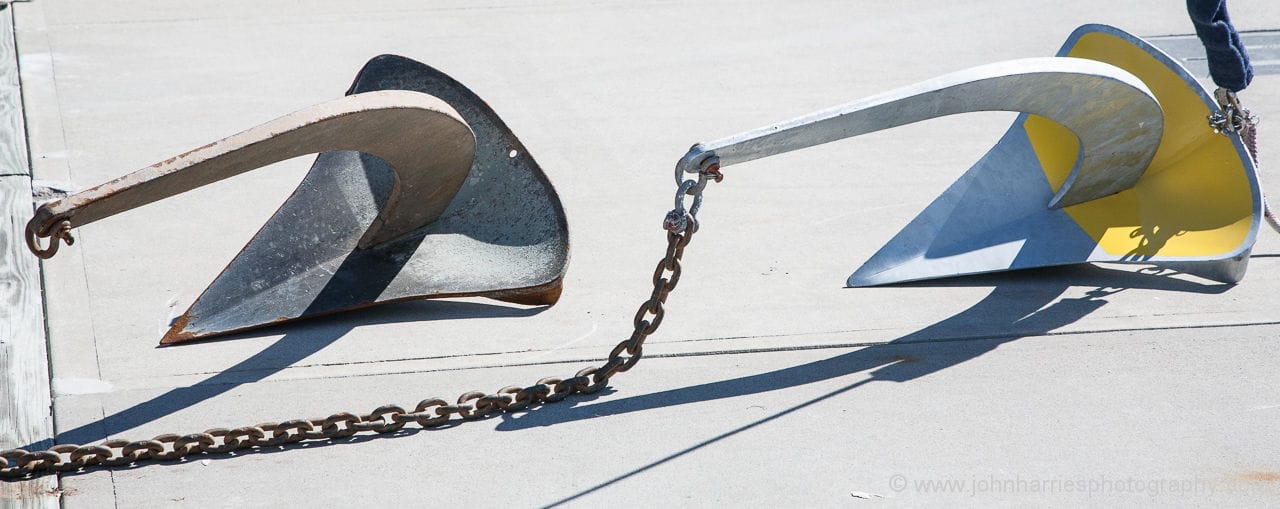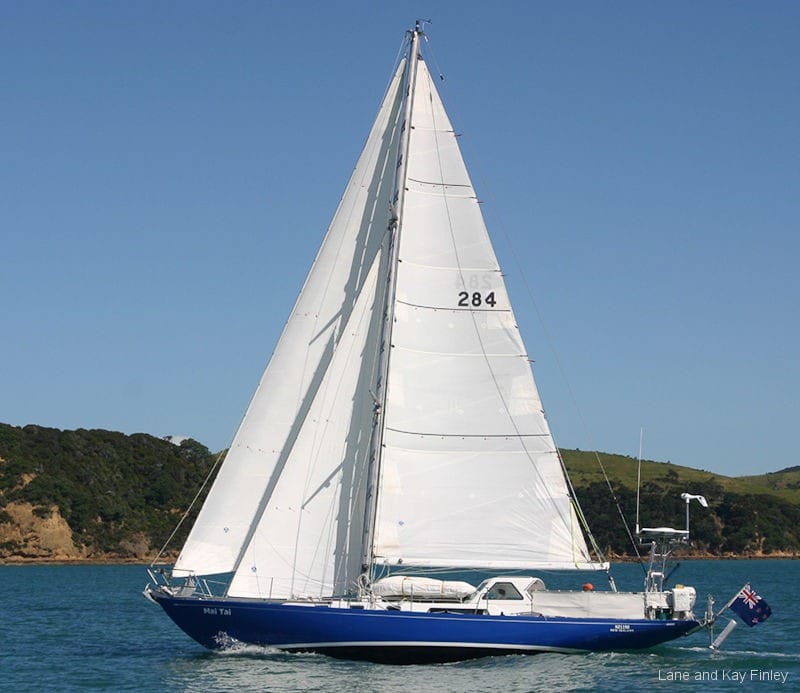MEMBERS
Click for TOC or scroll down for details
Articles in this topic:
- Sail Buying Tips
- Radar Collision Avoidance, Part 2—Turning Plotting Into Action
- Flawed Jackline Systems Revisited
- Radar Collision Avoidance, Part 1—Plotting
- TeamO Backtow Lifejacket/Harness Review
- 20 Practical Tips For Better Watchkeeping
- Reefing Tips
- 6 Tips For Mindful Watchkeeping
- How Many Reefs and How Deep?
- The Risks Of Sidedeck Jacklines Quantified
- 11 Tips For A Good Watch System
- Building a Robust and Practical Hard Dodger
- Tether Tension On A Dragging Crew Overboard
- 8 Offshore Cruising Boat & Gear Evaluation Tips
- Rigging Tips Part 2
- Spinlock Deckvest 6D Review
- Safe and Easy Offshore Sailing—When to Reef, Part 2
- Electrical Tips
- Why We Don’t Recommend Boom Brakes
- Safe and Easy Offshore Sailing—When to Reef, Part 1
- Building A Safer Boom Preventer, Part 3—The Details
- A Small-Boat Anchoring System
- When Is A Cruising Sailboat Too Big?
- Is Your Engine Properly Fused?
- Better Jacklines
- Building A Safer Boom Preventer, Part 2—Line and Gear Strength Calculator
- Building A Safer Boom Preventer, Part 1—Forces and Angles
- Surviving Storms While Coastal Cruising—21 Preparation Tips
- Rebuilding a Cobra Yacht Steering System—Reassembly
- Surviving Storms While Coastal Cruising—9 Tips for Anchorage and Harbour Selection
- Rebuilding a Cobra Yacht Steering System—Disassembly and Inspection
- Surviving Storms While Coastal Cruising—12 Strategy Tips
- 10 Reasons Why Hybrid Lithium Lead-Acid Systems are a Bad Idea
- Converting a Racing Sailboat to a Fast Cruiser—Performance and Rig
- Hurricane Mooring Weight Recommendation
- Lithium Buyer’s Guide—Budget: Economy Options
- Applying Power and Torque
- Hurricane Mooring Pennant Photo Article
- Understanding Power and Torque
- Lithium Buyer’s Guide—Budget: High End System
- Close to Home, Yet Far Away
- Wakespeed WS500 Compared To ARCO Zeus—What Matters
- 63 Cruising Boat Maintenance Tips
- Adventure 40 Electrical System—Part 1, Voltage and Batteries
- Deck Hardware Mounting Photo Essay
- Lithium Battery Buyer’s Guide—Fusing
- The Rolling Refit Continues
- Lithium Batteries Buyer’s Guide—Current (Amps) Requirements and Optimal Voltage
- The Zen of Sail Covers
- Lithium Batteries Buyer’s Guide—Balancing and Monitoring
- Selecting The Right Hull Form
- Lithium Batteries Buyer’s Guide—BMS Requirements
- Why We Have an eWincher on a Small Boat
- Electronic Chart Dangers
- Review of Ocean Signal PLB3 Against MOB1
- Weather Analysis—Part 2, Strategic
- Weather Analysis—Part 1, Tactical
- Yes, You Can Have an Offshore Sailboat For Less Than $US100,000
- Spade Anchor Failure, Update and Summary
- Weather Analysis—Hardware and Software
- Bilge Alarms And Monitoring
- Bent Spade Anchor Analysis
- 9 Tips to Assess Weather Forecast Accuracy
- Easily Driven Boats Are Better
- Sailing a New-To-Us Boat Home—What Could Go Wrong?
- Replacing Diesel-Generated Electricity With Renewables, Part 2—Case Studies
- Replacing Diesel-Generated Electricity With Renewables, Part 1—Loads and Options
- How Weight Affects Boat Performance and Motion Comfort
- Adventure 40 Cockpit 2.0
- Falmouth For Orders
- Watt & Sea Hydrogenerator Buyer’s Guide—Cost Performance
- To Sea At Last
- 10 Tips To Save Your Engine From Overheating
- Safety Inspection and Gear For a New-To-Us Boat
- Fire Extinguishers We Have Bought and Stuff We Learned
- Liferafts For Cruisers—Positioning and Mounting
- Starting With The Basics On A New-To-Us Cruising Boat
- Going Up The Mast—More Improvements
- Liferafts For Cruisers—40 Years of Real-World Experience
- Nine Autopilot Usage Tips and Hacks
- Liferafts For Cruisers—Purchase Criteria
- How To Tune An Autopilot To Steer Better—Part 2
- Finding and Buying a Dream
- Adventure 40 Deck-2.0
- How To Tune an Autopilot to Steer Better—Part 1
- Autopilot Buyer’s Guide
- Storm Strategy—Fore-Reaching
- Colin and Louise Have a New Boat
- Eight Steps to Get Ready For Lithium Batteries
- Q and A—Trucking a Boat
- A Real World Tested Tool Kit For Cruisers
- Five Boat Lift Usage Tips
- Adventure 40 Reveal—Salon and Forward Cabin
- Balancing Battery Bank and Solar Array Size
- Going Up The Mast at Sea
- Adventure 40 Reveal—Galley, Head, and Aft Storage
- Gear Leveling and Mounting Hack
- Going Up The Mast—Four Dangerous But Common Mistakes
- How To Do Amateur Engineering¹
- Going Up The Mast—Our System
- Going Up The Mast—Fundamentals
- Adventure 40 Reveal—On Deck
- Going Up the Mast—An Industrial Fall Prevention Approach
- Adventure 40 Reveal—Hull, Cockpit, and Rig
- In-Mast, In-Boom, or Slab Reefing —Performance, Cost and Safety
- In-Mast, In-Boom, or Slab Reefing—Convenience and Reliability
- Cross-Bank Battery Charging—DC/DC Chargers
- Cross-Bank Battery Charging—Splitters and Relays
- Battery Bank Separation and Cross-Charging Best Practices
- How Hard Can We Charge Our Lead-Acid Batteries?
- Choosing & Installing Battery Switches
- Battery Containment—Part 1
- 5 Safety Tips For Working on Boat DC Electrical Systems
- Building a Seamanlike Lithium Battery System
- Two More Shore Power Safety Upgrades
- 9 Tips To Select Seamanlike Gear
- Download Cruising Sailboat Rig Checklist
- When Stuff Goes Wrong At Sea
- 8 Tips To Prevent Lithium Battery Black Outs
- Why Lithium Battery Load Dumps Matter
- Cruising Sailboat Roller Furler and Track Inspection
- Positioning of Wood Plugs For Seacocks
- The True Price of Autopilots & Vane Gears
- Cruising Sailboat Rig Wiring and Lighting Inspection
- 7 Checks To Stop Our DC Electrical System From Burning Our Boat
- 11 Self-Steering Vane Gear Installation and Usage Tips
- Why Most New-To-Us Boat Electrical Systems Must Be Rebuilt
- Cruising Sailboat Running Rigging Inspection
- 12 Cruising Boat Maintenance Tips
- WakeSpeed WS500—Best Alternator Regulator for Lead Acid and Lithium Batteries
- Cruising Sailboat Standing Rigging Inspection
- Cruising Sailboat Spar Inspection
- Test Sail and Review of The Boréal 47.2
- Going Alongside (Docking)—12 More Tips and Tricks
- John Goes Sailboat Racing and Learns Stuff
- Protecting Our Boat’s Underwater Metals From Corrosion
- Going Alongside (Docking) in Current—Backing In
- Details Matter—Engine Failure at Sea
- Going Alongside (Docking) in Current—Turning in Confined Spaces
- Going Alongside (Docking) in Current—Fundamentals
- Helping a Member Choose an Anchor
- A Good First Aid Kit
- Why I Won’t Power Our Boat With a Portable Generator
- Setting and Striking a Spinnaker Made Easy and Safe
- Check Your Boat Shore Power System
- Our New Boat Selection Process—Fitness For Mission
- Cruiser’s Tool Kit—Wrenches
- 29 Tips To Get Insurance For Offshore Voyaging—Negotiating Cover
- 29 Tips To Get Insurance For Offshore Voyaging—Us and Our Boat
- Cruiser’s Power Tool Kit
- Leaving a Dock Against an Onshore Wind—Part 2
- Leaving a Dock Against an Onshore Wind—Part 1
- Getting Insurance For Offshore Voyaging—Understanding The Problem
- 14 Tips To Come Alongside Single-Handed—Part 2
- 14 Tips for Coming Alongside Single-handed—Part 1
- Integrating and Documenting NMEA 0183 and 2000 Networks
- Two More Anchor Selection Criteria
- Making Anchor Tests More Meaningful
- Choosing A Cruising Boat—Shade and Ventilation
- When Electric Drive Works For a Cruising Sailboat
- Roller Furling Headsail Risks and Rewards
- Choosing a Cruising Boat—Shelter
- Q&A—Sailboat Performance, When The Numbers Fail
- Offshore Sailboat Winches, Selection and Positioning
- Best Offshore Boat Cockpit Cushions
- Buying a Boat—A Different Way To Think About Price
- Safety: We Can’t Do Or Even Learn About It All
- Cockpits—Part 2, Visibility and Ergonomics
- Cooking Options For Live-aboard Voyagers—Part 2, Liquid Fuel
- Cooking Options For Live-aboard Voyagers—Part 1, Electric
- Cockpits—Part 1, Safe and Seamanlike
- Should Your Boat’s DC Electrical System Be 12 or 24 Volt?—Part 2
- Should Your Boat’s DC Electrical System Be 12 or 24 Volt?—Part 1
- Topping Lift Tips and a Hack
- The Danger of Voltage Drops From High Current (Amp) Loads
- Rigid Vangs
- Maretron—Better NMEA 2000 Cabling
- Efficient Generator-Based Electrical Systems For Yachts
- Is Induction Cooking For Boats Practical?
- eWincher Electric Winch Handle Review—Part 3, Reliability and Summary
- eWincher Electric Winch Handle Review—Part 2, The Competition
- eWincher Electric Winch Handle Review—Part 1, Our Testing
- Second Level Thinking About Offshore Voyaging Boats
- SeaAngel SA15 AIS Crew Overboard Beacon Compared to The Ocean Signal MOB1
- Sailboat Deck Layouts
- US$30,000 Starter Cruiser—Part 2, The Boat We Bought
- US$30,000 Starter Cruiser—Part 1, How We Shopped For Our First Cruising Sailboat
- Washing Machines: Complexity and Space Considerations
- Planning a Refit— Keel Removal and Inspection
- Q&A Backing Out of a Bow-In Med Moor
- Two New Designs From Boréal
- Stupid Alternator Regulators Get Smarter…Finally
- Sail Area: Overlap, Multihulls, And Racing Rules
- Torquing Keel Bolts
- Refits—The Radical Option
- Non-Destructive Testing of Keel Bolts
- Cruising Rigs—Sloop, Cutter, or Solent?
- Offshore Sailboat Keel Types
- Outbound 46 Review—Part 2, Keel, Rudder, Bow Thruster, and Construction
- Planning and Budgeting an Engine Rebuild or Replacement
- Outbound 46 Review—Part 1, Hull Form
- Planning a Refit—Upfront Costs
- ShoreFasts—Part 3, The Gear
- ShoreFasts—Part 2, Example Setups Plus Tips and Tricks
- ShoreFasts—Part 1, When to Use Them
- Planning a Refit—Rudders, Repair or Replacement
- Planning a Refit—The Problem With Rudders
- Yawing at Anchor, The Theory and The Solution
- Planning a Refit—Boat Parameters
- Retrieval of Dyneema (Spectra) Series Drogues Solved
- Planning a Refit—It’s a Lot About You
- Anchoring—Chain: Stoppers, Termination and Marking
- A Sail Away Offshore Cruising Boat For Less Than US$100,000—Best Hull Material
- Anchoring—Kellets
- A Sail Away Offshore Cruising Boat For Less Than US$100,000—Rudders and Keels
- A Sail Away Offshore Cruising Boat For Less Than US$100,000—Decks, Hulls and SS Fittings
- Anchoring—Snubbers
- A Sail Away Offshore Cruising Boat For Less Than US$100,000—Introduction
- Four Hand Tools I Should Have Bought Years Ago
- The Garcia Exploration 45 Compared to The Boréal 47—Part 5, Interior, Summary and Price
- The Garcia Exploration 45 Compared to The Boréal 47—Part 4, Inside Watch Stations
- Insanely Cool Anchorage Toys
- The Garcia Exploration 45 Compared to the Boréal 47—Part 3, Hull and Build
- Passage Anchorages
- The Garcia Exploration 45 Compared to the Boréal 47—Part 2, Deck and Cockpit
- The Garcia Exploration 45 Compared to the Boréal 47—Part 1, Introduction and Rig
- Ultra Anchor Review
- Which is Best For Navigation: Plotter, Computer or Tablet?
- Buying a Boat—Never Say Never
- New Satellite Communications Systems
- What We Need to Know About Moisture Meters and Wet Fibreglass Laminate
- Buying a Fibreglass Boat—Hiring a Surveyor and Managing the Survey
- A Useful, But Potentially Deadly, Feature of Navigation Apps and Plotters
- Buying a Cruising Boat—Five Tips for The Half-Assed Option
- 12 Electronic Navigation Tips From a Cruise on Someone Else’s Boat
- Coastal Passages, Part 5—On To The Finish
- You May Need a Bigger Boat Than You Think
- Costal Passages, Part 4—Keep On Plugging
- Six Things We Need to Check Before Survey
- Series Drogues: Learning From Randall Reeves
- Coastal Passages, Part 3—Off We Go
- Why Are Saildrives Even A Thing?
- Coastal Passages, Part 2—Rounding Headlands
- Six Things We Can Learn From A Night Approach That Ended on a Lee Shore
- Coastal Passages, Part 1—Making a Plan, 10 Tips
- Six Warnings About Buying Fibreglass Boats
- Rocna Resetting Failures and Evaluation of Vulcan and Mantus
- Learn From The Designers
- Refitting an Old Boat Can Work…For Some
- Specifying Primary Anchor Size
- SPADE, SARCA Excel, or Some Other Anchor?
- UV Protection For Roller Furling Sails
- Nigel Calder’s Integrel, Part 2—Is It Really Better Than a Generator?
- Nigel Calder’s Integrel, Part 1—What You Need To Know
- SARCA Excel Anchor—A Real World Test
- Cruising Boat Electrical System Design, Part 3—Specifying Optimal Battery Bank Size
- Cruising Boat Electrical System Design, Part 2—Thinking About Systems
- Cruising Boat Electrical System Design, Part 1—Loads and Conservation
- Alternatives to Chainplates For Drogue Attachment…Or Not
- Stuff We Gotta Do—The Anchor Roller Version
- Ocean Passaging—Turning Back Is Hard To Do
- Anchor Chain Catenary, When it Matters and When it Doesn’t
- Which Old Salts Should We Listen To? 10 Ways To Decide—Part 2
- Colin on Anchoring
- Which Old Salts Should We Listen To? 10 Ways To Decide—Part 1
- Storm Survival FAQ
- AIS Crew Overboard Beacons—Setting Up The Boat Alarms Right
- Just Get a Series Drogue Designed By Don Jordan…Dammit!
- Amidships “Preventers”—A Bad Idea That Can Kill
- Rogue Waves Are Not Bad Luck
- 5 Ways We Are Updating Our Thinking On Fire Fighting
- Battery Monitors, Part 3—Calibration and Use
- Battery Monitors, Part 2—Recommended Unit
- Battery Monitors, Part 1—Which Type Is Right For You?
- Battle Testing a Jordan-Designed Series Drogue—Round 2
- Rigging Tips Part 1
- 10 Things That Are Common On Offshore Cruising Boats…But Shouldn’t Be
- Rig Tuning, Part 5—Sailing Tune
- Battery Bank Size and Generator Run Time, A Case Study
- Rig Tuning, Part 4—Mast Blocking, Stay Tension, and Spreaders
- Rig Tuning, Part 3—6 Steps to a Great Tune
- Rig Tuning, Part 2—Understanding Rake and Bend
- Rig Tuning, Part 1—Preparation
- Battery Options, Part 2—Lead Acid
- Battery Options, Part 1—Lithium
- Two Dangerous Rigging Mistakes
- Boréal Yachts—Looking To The Future
- Boréal Yachts—Eight Years On
- 8 Things I Learned From a Lazy Man’s Galley Makeover
- Time to Stop Using And Selling Tethers with Gibb-style Hooks
- Crew Overboard Recovery—Our Replacement For Quick Stop
- Crew Overboard Recovery, Is The Quick Stop Bogus?
- Which Lifejacket Auto-Inflator Should We Select?
- Should We Wear Lifejackets or Harnesses, Both, Neither?
- Apps to Manage Boat Maintenance and Cruises
- Managing Boatyard Costs—Part 2
- Managing Boatyard Costs—Part 1
- Smartphone (CrewWatcher) or AIS-Based Crew Overboard Beacons?
- Severe Weather Probability Forecast Product
- Coming Alongside (Docking)—Backing In, Part 2
- Coming Alongside (Docking)—Backing In, Part 1
- Surviving The Boatyard—Part 2
- Surviving The Boatyard—Part 1
- Running Rigging Recommendations—Part 2
- Weather Routing In Action
- Running Rigging Recommendations—Part 1
- 29 Aluminum Boat Care Tips—Part 3
- Automated Weather Routing—Part 1, The Tools
- 29 Aluminum Boat Care Tips—Part 2
- Q&A, Coming Alongside (Docking) With Twin Rudders
- 29 Aluminum Boat Care Tips—Part 1
- Seven Skills We DON’T Need to Go Cruising
- The Golden Globe Race—The Boats and the Refits
- We Love The Way Our Anchor Drags
- Iridium GO! and UUPlus, Real World Use Review
- Watt & Sea Hydro Generator Review
- Can We Really Be Seen By Ships at Night?
- Crew Overboard Prevention—Use of Climbing Harnesses
- Coming Alongside (Docking)—Taming the Wind
- Coming Alongside (Docking)—The Final Approach
- Coming Alongside (Docking)—Manoeuvring in Close Quarters
- Battle Testing a Jordan-Designed Series Drogue—Round 1
- Get-Home Backup For Offshore Motorboats—Part 3, The Winner
- Get-Home Backup For Offshore Motorboats—Part 2, The Options
- Get-Home Backup for Offshore Motorboats—Part 1, Is It Even a Thing?
- Boat Heating—Part II
- Determining When Heaving-To Is Dangerous
- 10 Ways to Make Your Boat Easier to Bring Alongside a Dock
- Boat Heating—Part I
- Rigging The Spring That Makes Docking Easy, Or an Alternative
- Coming Alongside (Docking) in 4 Easy Steps
- Transitioning From Heaved-to To a Series Drogue
- Series Drogue Durability Problems
- The Right Tethers To Keep Us Aboard—Part 2, Construction and Hardware
- The Right Tethers To Keep Us Aboard—Part 1, A Mix
- 8 Radar Use Tips
- Three Tips to Make Your Cruising Boat Fault Tolerant
- 11 Tips for Safe Navigation With Phones and Tablets
- Navigation in Fog—Underway
- Navigation in Fog—Preparation
- Navigating in Fog—The Tools
- The Artnautica LRC 58 Adventure Edition Offshore Motorboat
- Thinking About Better Offshore Motorboats
- Jacklines: Materials, Fabrication and Installation
- The Unknown Unknowns
- An Easy Way to Avoid Engine Failures
- Designing For Dux Rope Rigging—A Paradigm Shift—Part 2
- Dynice Dux, Part 1: Practical Low-Stretch Rope Rigging For Offshore Sailboats
- What Marine Engine Duty Ratings Mean To You
- A Sailor’s Cockpit Enclosure—Part 2
- A Sailor’s Cockpit Enclosure—Part 1
- Keeping Things Tasty—Tips For Food Storage (With No Refrigeration) & Meal Preparation
- Keeping Things Tasty—A 36,000-Mile Lesson In Provisioning
- The Perfect Anchor Roller
- The Three Keys To Cruising Happiness
- Q&A—Are Battery Desulphators a Good Idea?
- Hoisting the Mainsail Made Easy—Simplicity in Action
- Ten Tips To Fix Weather Helm
- How Batteries Charge (Multiple Charging Sources Too)
- Maiden Voyage of The Boreal 55—What Worked and What Didn’t
- One Simple Law That Makes Electrical Systems Easy to Understand
- Things I’ve Learned From Three Refits That Will Help You
- Giving a Tough Old Ocean Greyhound a New Purpose
- Refitting a Wauquiez Hood 38
- A Trans-Atlantic Boat For Less Than US$100,000
- How To Select The Best Power and Propeller Settings For Your Engine
- How To Stop Killing Your Engine With Kindness
- Controllable Pitch Propellers (CPPs)
- The Ultimate Guide to Using Iridium Handsets and GO!
- Going Cruising—Being Realistic About You, 4 Tips
- Iridium GO! Review—6 Myths Busted and a Purchase Recommendation
- 4 Great Tips From a Professional Meteorologist
- Mooring Your Dinghy While Ashore, Made Easy
- “Eala Bhan” Sails Home, Part III
- Keeping Safe From Chart Inaccuracies
- “Eala Bhan” Sails Home, Part II
- Five Tips For Choosing Weather Information to Believe…And Pay For
- “Eala Bhan” Sails Home—The Maiden Voyage of The Boréal 55
- Marine Electronics Recommendations—Communications
- Marine Electronics System Recommendations
- Two Tips to Make Your First Ocean Passage as Skipper Safe and Fun
- Anchor Tests—The Good, The Bad, and The Downright Silly
- Cutter Rig—Optimizing and/or Converting
- Cutter Rig—Should You Buy or Convert?
- 12 Reasons The Cutter Is A Great Offshore Voyaging Rig
- Propeller Efficiency
- Ten Ways to Make Propane Safer
- Boat Maintenance—Don’t Go Broke Saving Money
- Boréal 47—An Owner’s Experience
- Third Anchors, Storm Anchors and Spare Anchors
- Understanding An Engine Fuel Map
- Better Powertrains For Auxiliary Sailboats and Motorboats
- Downwind Sailing—Poling Out The Jib
- Downwind Sailing, Tips and Tricks
- Kedge (Secondary Anchor)—Recommended Type and Size
- Boat Maintenance—What’s Your Screwup Tolerance?
- Tools and Techniques For Managing Dissimilar Metals on Cruising Boats
- The Crazy Fools…Who Don’t Drown
- The Only Five Knots You Need to Know
- Attainably Adventurous Children
- Marine Electronics Recommendations—Radar
- Yawing at The Anchor, an Alternative Cure
- Spare Parts—Which To Buy and How To Keep Track Of Them
- Reefing From The Cockpit 2.0—Thinking Things Through
- The Secret Life Of Your GPS
- Getting Your Mojo Back
- A Real Sailor’s Motorboat Launched
- The Two Biggest Lies Yacht Brokers Tell
- Q&A: Safety of Large Pilothouse Windows
- Download Your Gift eBook
- Rustler Yachts: Maybe There’s Hope Yet?
- The Loss of “Team Vestas Wind”
- 9 Tips To Make Unstepping a Sailboat Mast Easier
- Our Mainsail Is Our Friend
- 6 Tips To Stop Marine Electronics From Ruining Your Cruise
- Perfect or Good Enough?
- Staying Attached To The Boat
- Install A Wash-down Pump—And Save Money!
- Motorboating and Sailing Compared—Part 2
- Motorboating and Sailing Compared—Part 1
- Crash Pump
- The Right Way to Buy a Boat…And The Wrong Way
- Estimating The Cost of Maintaining a Cruising Boat
- You Need More Than Money
- The World’s Best Bilge Pump Switch
- Loss of Yacht “Tao”
- Do You Need A Generator?
- Real Numbers For Electric And Diesel-Electric Drives
- Five Ways That Bad Boats Happen
- Backup Systems
- Do You Still Need Paper Charts?
- Protecting Against Lightning Strikes
- John & Phyllis’ 36 Immutable Rules of Seamanship
- Lithium Ion Batteries Explained
- Two Yacht Losses, Many Lessons Learned
- 20 Tips To Get Anchored and Stay Anchored
- 10 Tips To Install An Alternator
- 10 Tips to Help You Get Out There Cruising
- Artnautica 58—Design Analysis
- Design Parameters For an Ideal Sailor’s Motorboat
- Selecting a Chain Grade
- Mainsail Handling Made Easy with Lazyjacks
- Do We Need Watertight Bulkheads?
- Impact Resistance—Two Collision Scenarios
- Impact Resistance—How Hull Materials Respond to Impacts
- The Real Reason to Use a Harness and Tether
- A Sailor’s Motorboat
- Characteristics of Boat Building Materials
- Summary And Conclusions For Heavy Weather Offshore Section
- Companionway Integrity In A Storm
- Real Life Storm Survival Story
- Storm Survival Secret Weapon: Your Engine
- Surviving A Lee Shore
- Series Drogues: Learning From Tony Gooch
- Jordan Series Drogue Retrieval—An Alternative From Hal Roth
- Jordan Series Drogue Attachments And Launch System
- Jordan Series Drogue Retrieval System
- When Heaving-To Is Dangerous
- Heaving-To
- Goals For A Heavy Weather System
- Introduction—We Need A System
- 8 Tips For a Great Cruising Boat Interior Arrangement
- Cycle Loading—8 Tips for Boat and Gear Purchases
- Electric or Diesel-Electric Drives for Voyaging Boats
- Two Anchors Done Right
- Cyclical Loading: Why Offshore Sailing Is So Hard On A Boat
- Harnesses and Lifejackets and How to Use Them
- Keeping The Water Flowing
- The Risks of Falling Overboard at Sea
- Is It a Need or a Want?
- One Anchor or Two?
- Hydro Power
- Solar Power
- Wind Generators
- Renewable Power
- A Dangerous Myth about Reefing
- Choosing a Spot
- Laziness Never Goes Unpunished
- Pitfalls to Avoid When Buying a New Voyaging Boat
- The Case For Roller-Furling Headsails
- Are Refits Worth It?
- The Case For Hank On Headsails
- Thinking About a Steel Boat?
- A Reluctant Voyager?
- Tips For Receiving Weather Forecasts
- New Engine, The Proof is in The Voyage
- Tips For Receiving GRIBs
- Choosing an Anchorage
- Tips For Receiving Weather Fax
- It’s A Forecast, Not A Prophecy
- The Importance Of The Big Picture
- A Windlass That Makes The Grade
- Things to Know About Anchor Chain
- Serve Your Apprenticeship
- Priorities In Preparation
- Making Life Easier—Roller Reefing/Furling
- Clear The Decks For Action
- Making Life Easier—Storm Jib
- How To Use An Anchor Trip Line
- The Beauty Of Simplicity
- Chart Plotters And Autopilots, Never The Twain Should Meet
- Perkins M92B, Initial Report Card
- Equalizing Batteries, The Reality
- Storm Preparation, All Chain On Deck
- Anchor Swivels, Just Say No
- Q&A: Hybrid Rope And Chain Anchor Rodes
- AC Chargers For Lead Acid Batteries
- How Lead Acid Batteries Get Wrecked and What To Do About It
- Engine Installation—The Devil Is In The Details
- Test Sail On A Boréal 44
- Rudder Options
- Boréal 44 Design
- A Boat Designed For The High Latitudes
- New Engine For “Morgan’s Cloud”—What We Chose
- Selection Criteria For The New Engine For “Morgan’s Cloud”
- Three Navigation Mistakes That Can Wreck You
- Knowing Where It’s At
- Boréal Sailboats–An Introduction
- Don’t Forget About The Sails
- Managing Ocean Currents
- Gale And Storm At Anchor Or On A Mooring Check List
- Swept-Back Spreaders—We Just Don’t Get It!
- Carbon Fiber Masts and Lightning: Myths, Assurances And Risks
- Carbon Fiber Mast, Costs and Benefits
- The Benefits Of Carbon Fibre Masts
- How To Home Build a Hard Dodger For an Offshore Sailboat
- Cockpit Dodger For an Offshore Sailboat
- Q&A: Staysail Stay: Roller Furling And Fixed Vs Hanks And Removable
- Anchor Rode Questions and Answers
- There’s No Excuse For Pounding
- A Motorsailer For Offshore Voyaging?
- At What Age should You Stop Sailing And Buy a Motorboat?
- It’s Often Better to Anchor Than Pick Up a Mooring
- Reefing Questions and Answers
- A Prairie Woman Goes To Sea
- Taming The Wimp Within
-
Coming Alongside (Docking) in 4 Easy Steps
41 CommentsReading Time: 6 minutesMembersRead more: Coming Alongside (Docking) in 4 Easy StepsNow we get to the good stuff: a step-by-step guide, with diagrams and video, that makes coming alongside easy, even short-handed and when the wind is up.
-
Transitioning From Heaved-to To a Series Drogue
30 CommentsReading Time: 4 minutesMembersRead more: Transitioning From Heaved-to To a Series DrogueChanging survival strategies in the middle of a storm at sea is not something that any of us want to be faced with, but here are some thoughts from John about how that might be done safely.
-
Series Drogue Durability Problems
79 CommentsReading Time: 8 minutesMembersRead more: Series Drogue Durability ProblemsThere have been a couple of well-publicized cases of series drogues, based on Don Jordan’s research and design, deteriorating after as little as ten hours’ use in strong gale conditions. John investigates and shares what he intends to do to upgrade his drogue.
-
The Right Tethers To Keep Us Aboard—Part 2, Construction and Hardware
84 CommentsReading Time: 5 minutesMembersRead more: The Right Tethers To Keep Us Aboard—Part 2, Construction and HardwareIn the last chapter, John wrote about the two different types of tethers he and Phyllis use on Morgan’s Cloud. In this chapter he follows up with the details of how they build each type.
-
The Right Tethers To Keep Us Aboard—Part 1, A Mix
82 CommentsReading Time: 7 minutesMembersRead more: The Right Tethers To Keep Us Aboard—Part 1, A MixOur project to improve crew overboard prevention systems has been a long and winding three-year-to-traverse road. But we are nearly there. Here’s the first of two chapters on tethers.
-
Three Tips to Make Your Cruising Boat Fault Tolerant
40 CommentsReading Time: 7 minutesMembersRead more: Three Tips to Make Your Cruising Boat Fault TolerantLet’s face it, cruising boats are horribly unreliable, and gear failures are the most common cruise-ruiner. But we can reduce the problems a lot by thinking about fault tolerance. Here are three real world examples you can use right now to make your boat better.
-
The Artnautica LRC 58 Adventure Edition Offshore Motorboat
51 CommentsReading Time: 8 minutesMembersRead more: The Artnautica LRC 58 Adventure Edition Offshore MotorboatFour Artnautica LRC 58s are already launched or in build. Here are some new storm survival and layout options based on John and Phyllis’ decades of living on and sailing an expedition sailboat.
-
Thinking About Better Offshore Motorboats
29 CommentsReading Time: 4 minutesMembersRead more: Thinking About Better Offshore MotorboatsOffshore motorboats could be safer, faster, and much, much, more fuel efficient. John looks at how, and some innovative boats that are making that happen.
-
Jacklines: Materials, Fabrication and Installation
105 CommentsReading Time: 11 minutesMembersRead more: Jacklines: Materials, Fabrication and InstallationAre you making or ordering jacklines to keep your crew safely on the boat? John takes a deep dive into the right material, stitching, and attachment techniques. This is truly a project where the details matter.
-
The Unknown Unknowns
17 CommentsReading Time: 3 minutesMembersRead more: The Unknown UnknownsWe sometimes write about cool new gear here at AAC, but now it’s time to take a step back and remind ourselves of the vital stuff that will actually get us out there voyaging.
-
An Easy Way to Avoid Engine Failures
44 CommentsReading Time: 3 minutesMembersRead more: An Easy Way to Avoid Engine FailuresA quick read that can make a huge difference to the reliability of your engine.
-
Designing For Dux Rope Rigging—A Paradigm Shift—Part 2
41 CommentsReading Time: 7 minutesMembersRead more: Designing For Dux Rope Rigging—A Paradigm Shift—Part 2Andy takes a deep dive into when, if and how, to re-rig with Dux high modulus Dyneema rope. Techniques, advantages and disadvantages, it’s all here.
-
Dynice Dux, Part 1: Practical Low-Stretch Rope Rigging For Offshore Sailboats
35 CommentsReading Time: 4 minutesMembersRead more: Dynice Dux, Part 1: Practical Low-Stretch Rope Rigging For Offshore SailboatsAndy’s a big fan of Dux high modulus rope standing rigging. He takes a look at what Dux is and some really interesting uses for it.
-
What Marine Engine Duty Ratings Mean To You
8 CommentsReading Time: 6 minutesMembersRead more: What Marine Engine Duty Ratings Mean To YouJust what is a commercial or continuous duty rating on an engine, and should you get that? Matt starts this chapter with the reason that these ratings exist, and then moves on to how to select the correct engine duty rating for a displacement boat.
-
A Sailor’s Cockpit Enclosure—Part 2
37 CommentsReading Time: 8 minutesMembersRead more: A Sailor’s Cockpit Enclosure—Part 2Considering a cockpit enclosure? Building one that a real sailor can love takes a deep fixation on getting the details right.
-
A Sailor’s Cockpit Enclosure—Part 1
21 CommentsReading Time: 5 minutesMembersRead more: A Sailor’s Cockpit Enclosure—Part 1Benafits and drawbacks of a cockpit enclosure for an offshore sailboat.
-
Keeping Things Tasty—Tips For Food Storage (With No Refrigeration) & Meal Preparation
23 CommentsReading Time: 6 minutesMembersRead more: Keeping Things Tasty—Tips For Food Storage (With No Refrigeration) & Meal PreparationGuests onboard Sila have been surprised by just how good the food is. Molly shares tips for safe food storage and tasty meal preparation without refrigeration.
-
Keeping Things Tasty—A 36,000-Mile Lesson In Provisioning
15 CommentsReading Time: 6 minutesMembersRead more: Keeping Things Tasty—A 36,000-Mile Lesson In ProvisioningMolly shares lessons she learned about provisioning while sailing over 36,000 miles over three years, from Europe, around South America, back to Europe and home to New England.
-
The Perfect Anchor Roller
96 CommentsReading Time: 11 minutesMembersRead more: The Perfect Anchor RollerThere are few pieces of gear on many voyaging boats that are as poorly designed as the anchor roller. But it doesn’t have to be that way.
-
The Three Keys To Cruising Happiness
12 CommentsReading Time: 4 minutesMembersRead more: The Three Keys To Cruising HappinessFamily happiness and crew morale are vital for a successful voyage. During the last three years, while living aboard and sailing 36,000 miles on Sila, a Boréal 47, Molly Barnes and her family have come up with The Three Keys To Cruising Happiness.
-
Q&A—Are Battery Desulphators a Good Idea?
17 CommentsReading Time: 4 minutesMembersRead more: Q&A—Are Battery Desulphators a Good Idea?The claims made for battery pulse desulphators seem to make them ideal for voyaging boats. A cheap, easy to install gadget that will dramatically extend your expensive batteries’ lives. What’s not to like? But do they really work? John takes a look.
-
Hoisting the Mainsail Made Easy—Simplicity in Action
85 CommentsReading Time: 4 minutesMembersRead more: Hoisting the Mainsail Made Easy—Simplicity in ActionWhen we have a problem on our boats, it’s always tempting to try to fix it by adding gear, but often a better approach is simplification. We look at mainsail hoisting as an example and provide several tips to make the job easier.
-
Ten Tips To Fix Weather Helm
62 CommentsReading Time: 6 minutesMembersRead more: Ten Tips To Fix Weather HelmThere are few problems that detract more from the pleasure of sailing than a bad case of weather helm, a surprisingly common affliction. The good news is that this problem can be fixed.
-
How Batteries Charge (Multiple Charging Sources Too)
96 CommentsReading Time: 6 minutesMembersRead more: How Batteries Charge (Multiple Charging Sources Too)The details of how batteries charge and how voltage regulators work together…or not. Practical information that will help make sure you have electricity when you need it.
-
Maiden Voyage of The Boreal 55—What Worked and What Didn’t
47 CommentsReading Time: 8 minutesMembersRead more: Maiden Voyage of The Boreal 55—What Worked and What Didn’tColin’s report on testing some of the latest and coolest gear on a brand new Boreal 55: autopilot, plotter, radar, stove, hydrogenerator, it’s all here. A real gear-heads article.
-
One Simple Law That Makes Electrical Systems Easy to Understand
53 CommentsReading Time: 6 minutesMembersRead more: One Simple Law That Makes Electrical Systems Easy to UnderstandElectricity, batteries and how to charge them are the source of more confusion in the cruising world than just about anything I can think of. But suppose you could really understand electricity? Now you can, and it’s not hard. Read on.
-
Things I’ve Learned From Three Refits That Will Help You
35 CommentsReading Time: 5 minutesMembersRead more: Things I’ve Learned From Three Refits That Will Help YouAndy Schell summarizes what he has learned from the three refits , and provides some solid hard-earned tips for anyone considering refitting an old boat.
-
Giving a Tough Old Ocean Greyhound a New Purpose
18 CommentsReading Time: 5 minutesMembersRead more: Giving a Tough Old Ocean Greyhound a New PurposeMaking over an older quality racing boat into a capable and fast offshore cruising boat.
-
Refitting a Wauquiez Hood 38
16 CommentsReading Time: 7 minutesMembersRead more: Refitting a Wauquiez Hood 38What it takes to refit a good sailboat to make her ocean cruising ready.
-
A Trans-Atlantic Boat For Less Than US$100,000
55 CommentsReading Time: 8 minutesMembersRead more: A Trans-Atlantic Boat For Less Than US$100,000Refitting a 45 year old 35’ Allied Seabreeze Yawl to make her ocean cruising ready.
-
How To Select The Best Power and Propeller Settings For Your Engine
84 CommentsReading Time: 8 minutesMembersRead more: How To Select The Best Power and Propeller Settings For Your EngineIn the last chapter in this Online Book, John wrote about how chronic underloading of your engine can wreck it, as well as waste fuel and produce unnecessary carbon. In this chapter we get to the good stuff: how to solve the problem for both new and existing engines.
-
How To Stop Killing Your Engine With Kindness
88 CommentsReading Time: 8 minutesMembersRead more: How To Stop Killing Your Engine With KindnessRunning your engine at low power settings can slowly kill it. Here’s what to do about that. This could save you a bunch of money and aggravation.
-
Controllable Pitch Propellers (CPPs)
37 CommentsReading Time: 7 minutesMembersRead more: Controllable Pitch Propellers (CPPs)So far in this Online Book we have learned about the fundamentals of engine and propeller efficiency and, in the last chapter, we looked at a way to make our existing engines a bit more efficient. In this chapter Matt explains a much better way to get the very most out of every drop of diesel fuel.
-
The Ultimate Guide to Using Iridium Handsets and GO!
114 CommentsReading Time: 11 minutesMembersRead more: The Ultimate Guide to Using Iridium Handsets and GO!The whole process of buying, installing and working with a satellite phone can be downright intimidating and very frustrating. John explains how to make the whole process easy. The results of 15 years of experience with Iridium devices.
-
Going Cruising—Being Realistic About You, 4 Tips
41 CommentsReading Time: 7 minutesMembersRead more: Going Cruising—Being Realistic About You, 4 TipsSo much of writing on getting out cruising focuses on boats and gear. But, in fact, there is something even more important to think about…you.
-
Iridium GO! Review—6 Myths Busted and a Purchase Recommendation
73 CommentsReading Time: 5 minutesMembersRead more: Iridium GO! Review—6 Myths Busted and a Purchase RecommendationFew pieces of new gear have created more buzz in the offshore cruising community than the Iridium GO!. And there have also been few pieces of gear that have been surrounded with as many myths and as much confusion as the GO!. John busts the myths and analyzes the benefits of buying an Iridium GO!.
-
4 Great Tips From a Professional Meteorologist
53 CommentsReading Time: 4 minutesMembersRead more: 4 Great Tips From a Professional MeteorologistWe got our hands on a real live professional meteorologist, who is also an offshore sailor, and wrung 4 great tips out of him that will make your voyages both safer and more comfortable.
-
Mooring Your Dinghy While Ashore, Made Easy
42 CommentsReading Time: 9 minutesMembersRead more: Mooring Your Dinghy While Ashore, Made EasySome of the most fun we can have while cruising is while exploring ashore, but what if there is no dinghy dock? How do you make sure your dinghy is safe while you’re gone? Here’s an easy-to-deploy mooring you can build that solves the problem…and it will save your back too.
-
“Eala Bhan” Sails Home, Part III
12 CommentsReading Time: 10 minutesMembersRead more: “Eala Bhan” Sails Home, Part IIIColin continues his tale of a fall voyage to Scotland, complete with snug loch anchorages, a gale in confined tidal waters, and a fast canal transit, wrapping up with a summary of the Boréal 55 based on a good real-world test—lots more to learn and enjoy.
-
“Eala Bhan” Sails Home, Part II
21 CommentsReading Time: 9 minutesMembersRead more: “Eala Bhan” Sails Home, Part IIThere are few trickier places to sail than the waters surrounding the British Isles and when you throw in fall weather that goes double. Colin puts his decades of experience in the area to work to make it look easy—we can all learn a lot about coastal passagemaking from this article on the maiden voyage of the first Boréal 55.
-
Five Tips For Choosing Weather Information to Believe…And Pay For
56 CommentsReading Time: 6 minutesMembersRead more: Five Tips For Choosing Weather Information to Believe…And Pay ForThere’s a lot of great weather information out there these days…and a lot of hype too. Here are some tips that will help you tell the difference and decide what’s worth spending your money on.
-
“Eala Bhan” Sails Home—The Maiden Voyage of The Boréal 55
46 CommentsReading Time: 10 minutesMembersRead more: “Eala Bhan” Sails Home—The Maiden Voyage of The Boréal 55After seven years of building great expedition sailboats, Boréal have put everything they have learned into the new 55. And no one is better qualified to tell you about this new boat, that we can all learn from, than Colin, who supervised her build.
-
Two Tips to Make Your First Ocean Passage as Skipper Safe and Fun
29 CommentsReading Time: 5 minutesMembersRead more: Two Tips to Make Your First Ocean Passage as Skipper Safe and FunThe skills required to become a competent skipper of an ocean crossing yacht are not that difficult to learn, but there are a couple of things we must do to attain that goal.
-
Anchor Tests—The Good, The Bad, and The Downright Silly
44 CommentsReading Time: 6 minutesMembersRead more: Anchor Tests—The Good, The Bad, and The Downright SillyWe sailors love to talk about anchor tests, and yes, they are useful, but never forget that they are all fundamentally flawed.
-
Cutter Rig—Optimizing and/or Converting
118 CommentsReading Time: 9 minutesMembersRead more: Cutter Rig—Optimizing and/or ConvertingNow we get to the nitty gritty: How to convert your boat to a cutter rig and how to make existing cutters better.
-
Cutter Rig—Should You Buy or Convert?
40 CommentsReading Time: 3 minutesMembersRead more: Cutter Rig—Should You Buy or Convert?When does the cutter rig make sense, both when buying a new boat and considering a conversion? We have a simple decision-tree to make things simple.
-
12 Reasons The Cutter Is A Great Offshore Voyaging Rig
74 CommentsReading Time: 9 minutesMembersRead more: 12 Reasons The Cutter Is A Great Offshore Voyaging Rig12 reasons that the true cutter is simply the best rig for short-handed offshore voyaging. And even if you don’t have a cutter, this chapter can help you make your boat easier to sail and faster too.

